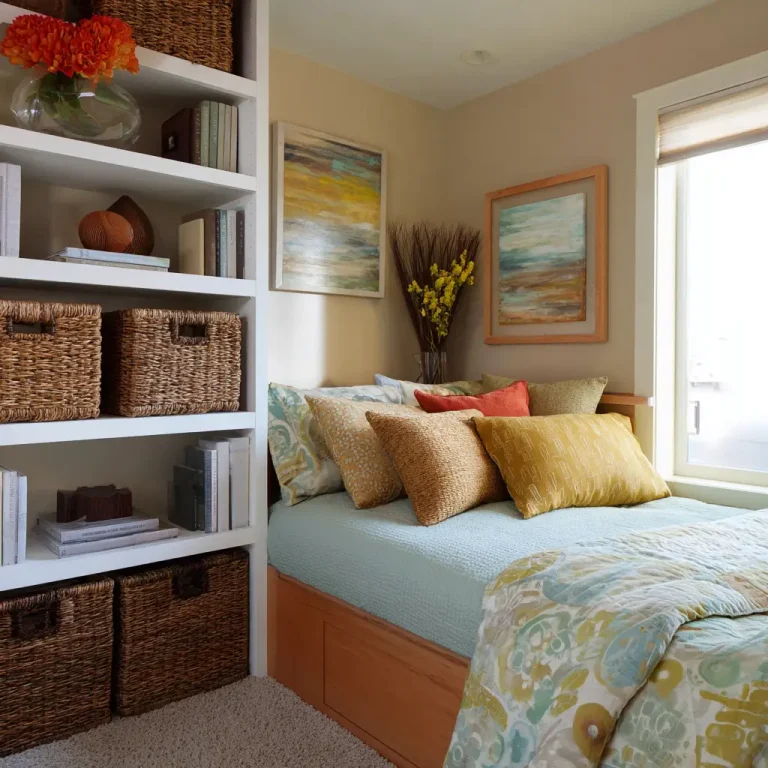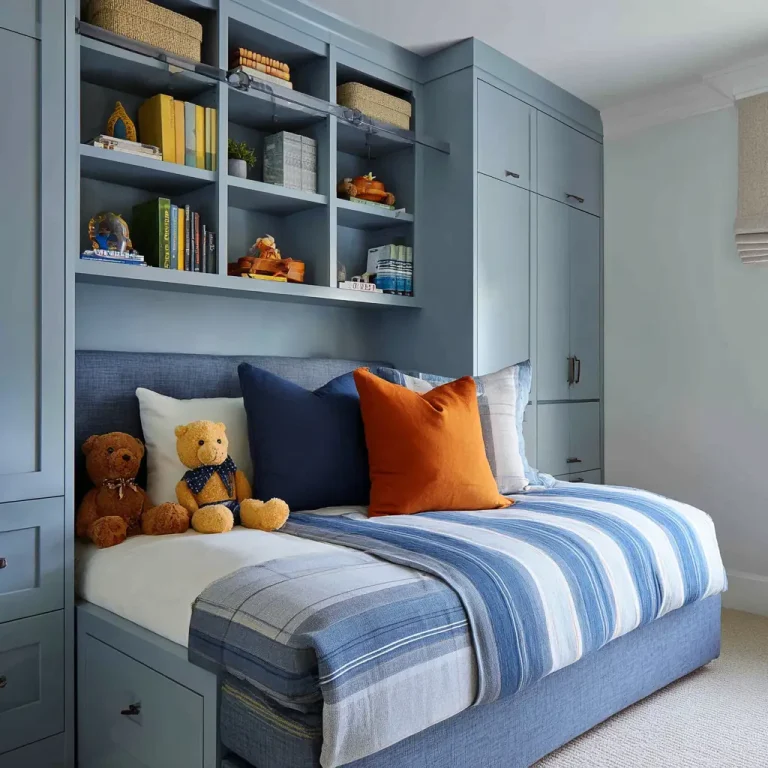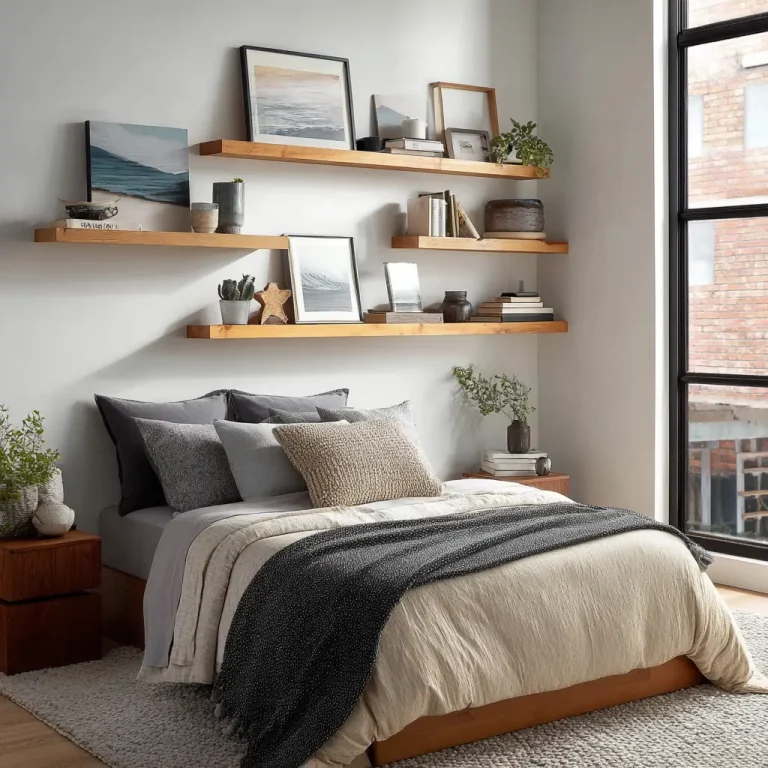30 Kitchen Organization Ideas That Actually Work
A well-organized kitchen isn’t just about a Pinterest-perfect aesthetic—it’s about building a space that works with your lifestyle. Whether you’re a busy parent trying to whip up weekday dinners, a foodie who loves experimenting with recipes, or someone who just wants to avoid the daily chaos of rummaging through overflowing drawers, an efficient kitchen setup can help you reclaim time, space, and even your sanity. These 30 kitchen organization ideas are tailored to real life—messy, beautiful, and busy.
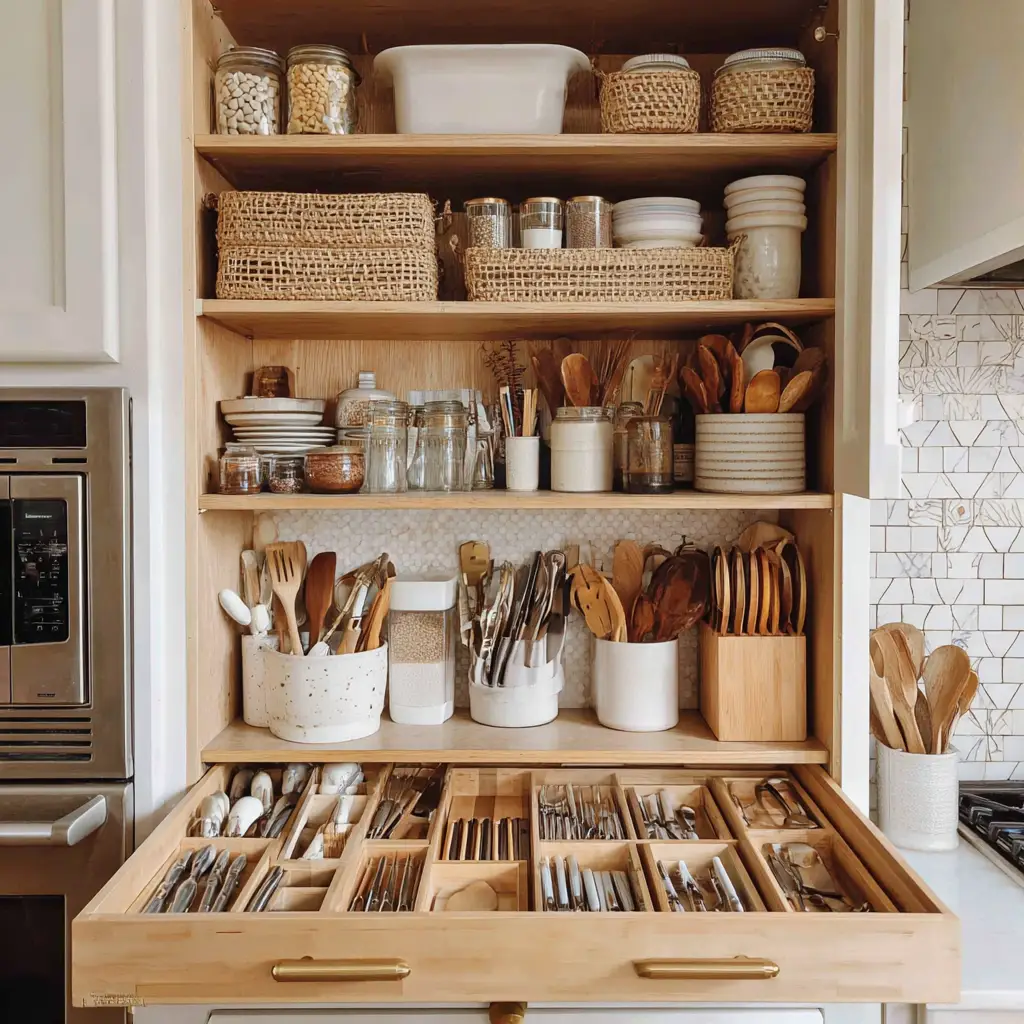
1. Group Similar Items Together
One of the simplest but most powerful organization hacks is to store like items together. Keep all your baking ingredients in one bin, group all your breakfast essentials on one shelf, and designate a spot for snacks. This system helps you find things faster and keeps your cooking flow uninterrupted. Over time, you’ll also notice fewer duplicates and expired items.
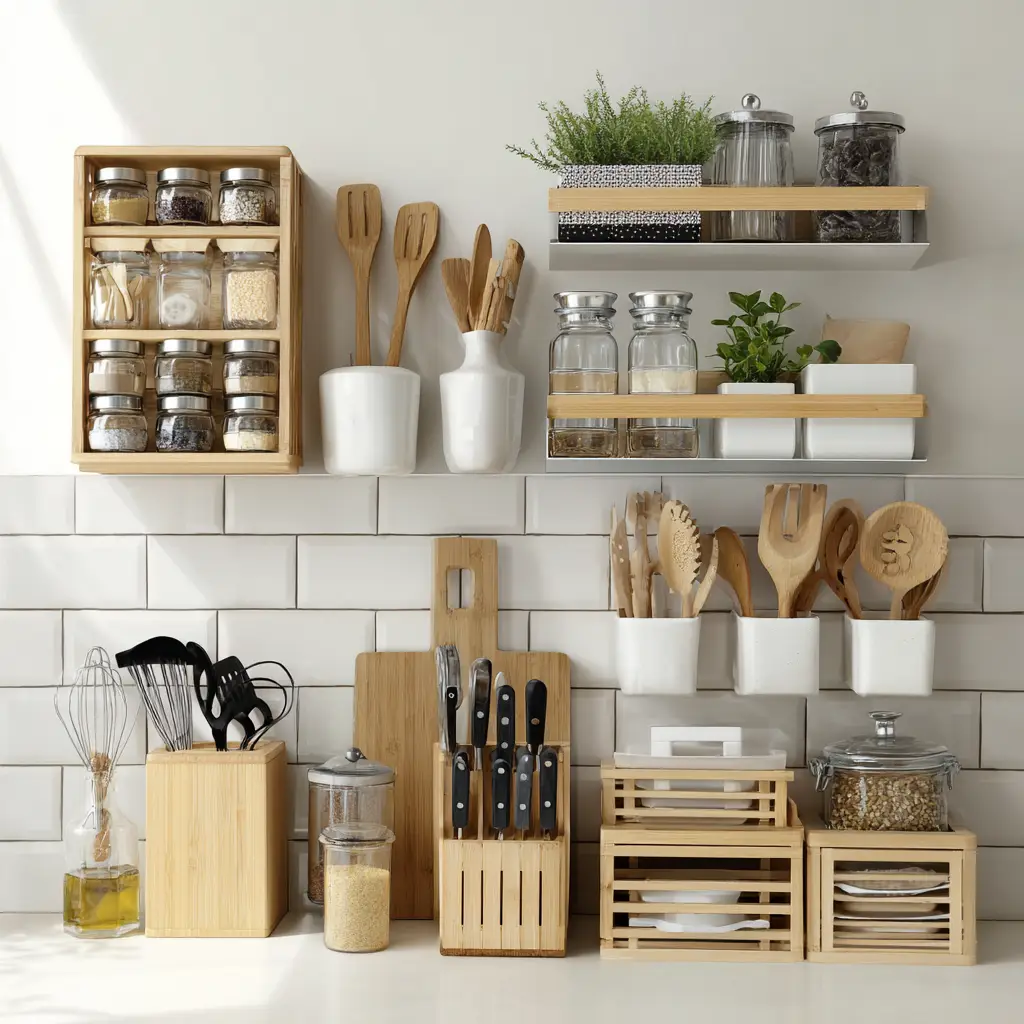
2. Use Clear Containers
Clear, airtight containers not only look great but also make it easier to manage your inventory. When you can see what’s inside, you’re less likely to overbuy or forget about hidden ingredients. These containers work beautifully for dry goods like rice, cereal, pasta, or snacks. Choose stackable versions to maximize space in your pantry or cabinet.
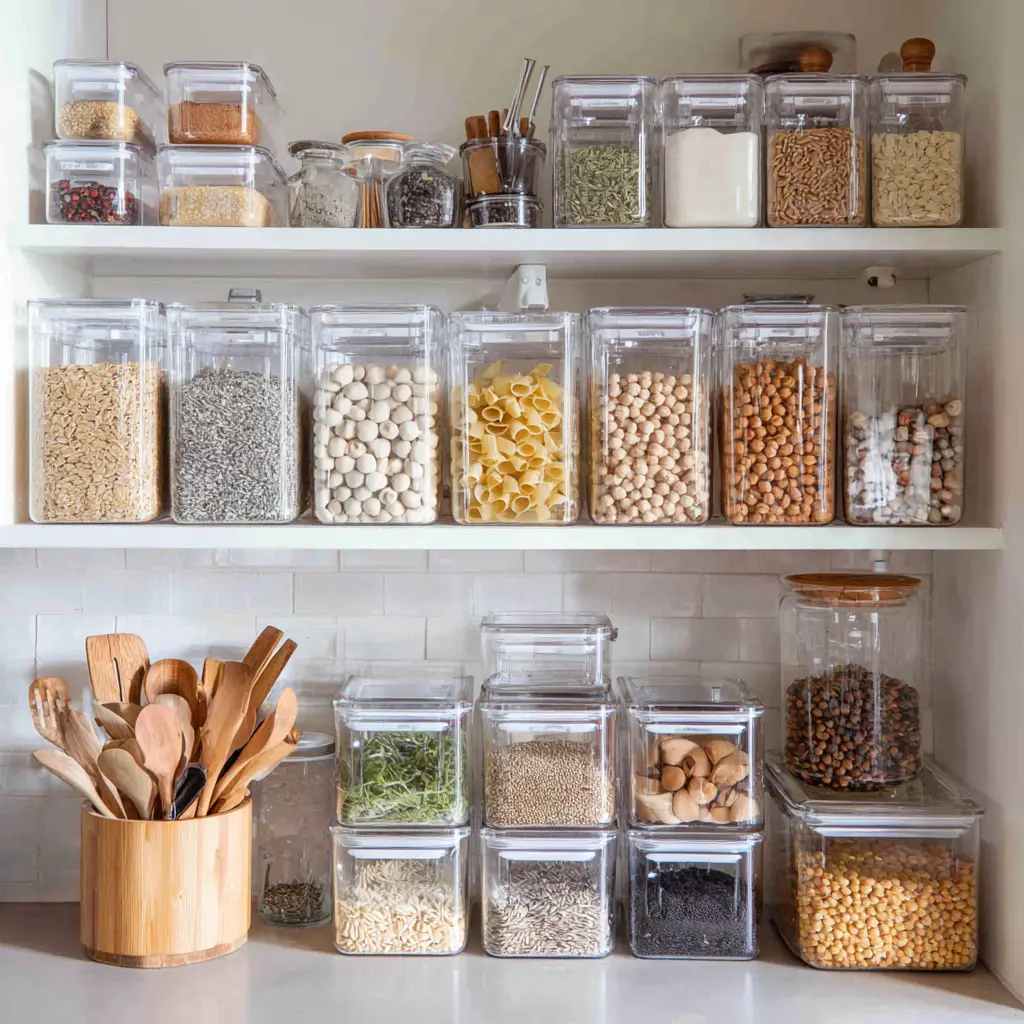
3. Turntables for Corner Cabinets
Corner cabinets are often awkward, and items get lost in the back. A turntable or Lazy Susan can transform this dead space into an efficient storage zone. Place jars, oils, vinegars, or even canned goods on a rotating base, so everything is just a spin away. It’s especially helpful for elderly family members or anyone with mobility issues.
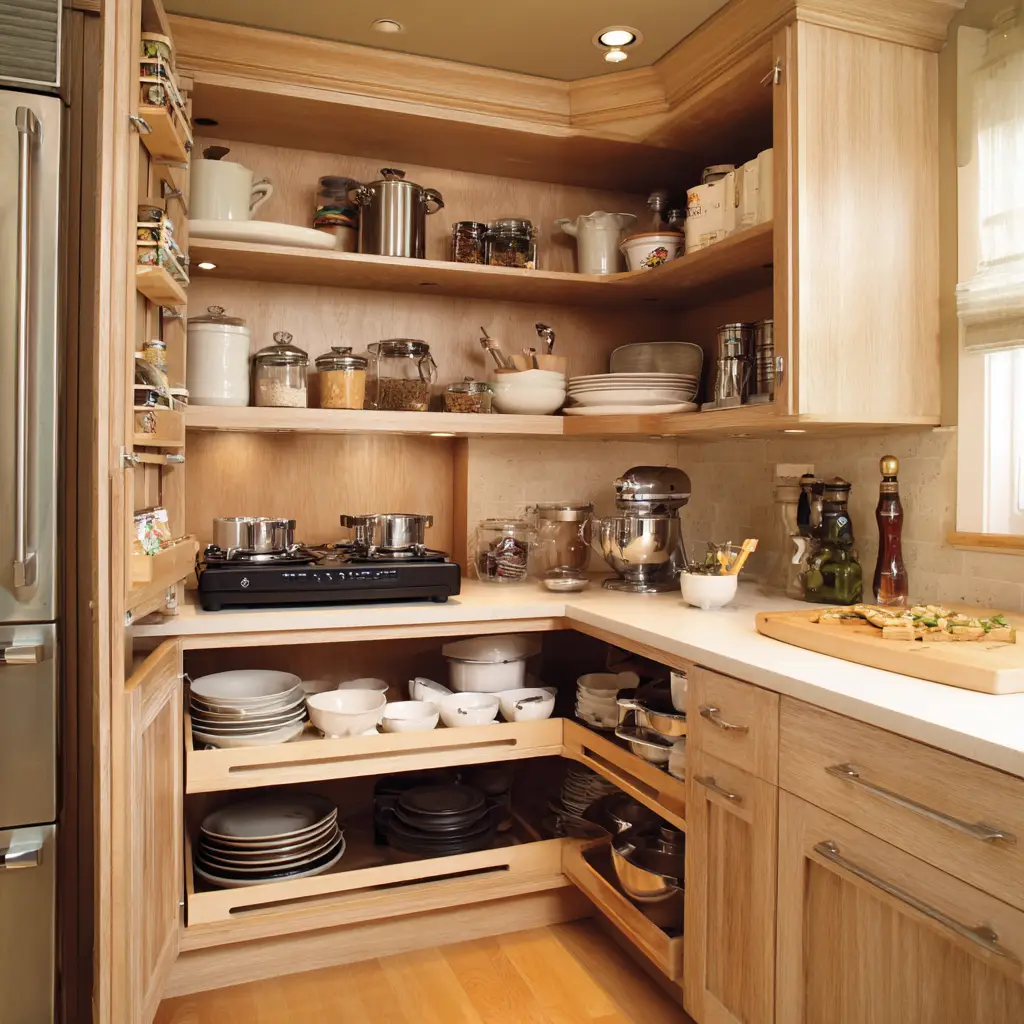
4. Install Pull-Out Drawers in Lower Cabinets
Digging through the bottom shelf for your slow cooker or large pot is a pain. Installing pull-out drawers or sliding shelves in lower cabinets can make a huge difference. These allow you to access everything without having to empty half the cabinet. They’re ideal for heavy or bulky items that you use regularly.
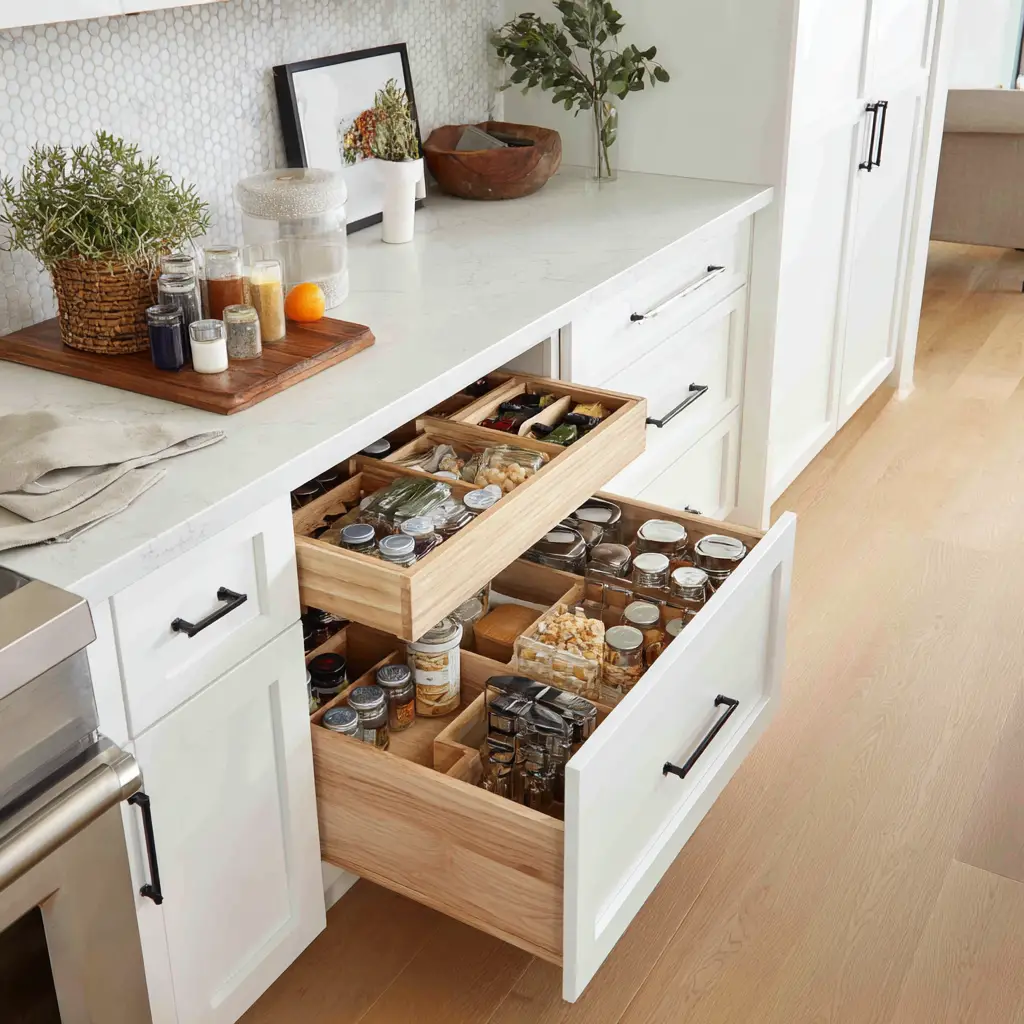
5. Use Drawer Dividers
Drawers become black holes without structure. Dividers help you separate cooking utensils, measuring spoons, scissors, and kitchen gadgets. For added customization, use adjustable bamboo dividers or DIY your own with upcycled cardboard. A tidy drawer saves precious time when you’re mid-recipe.
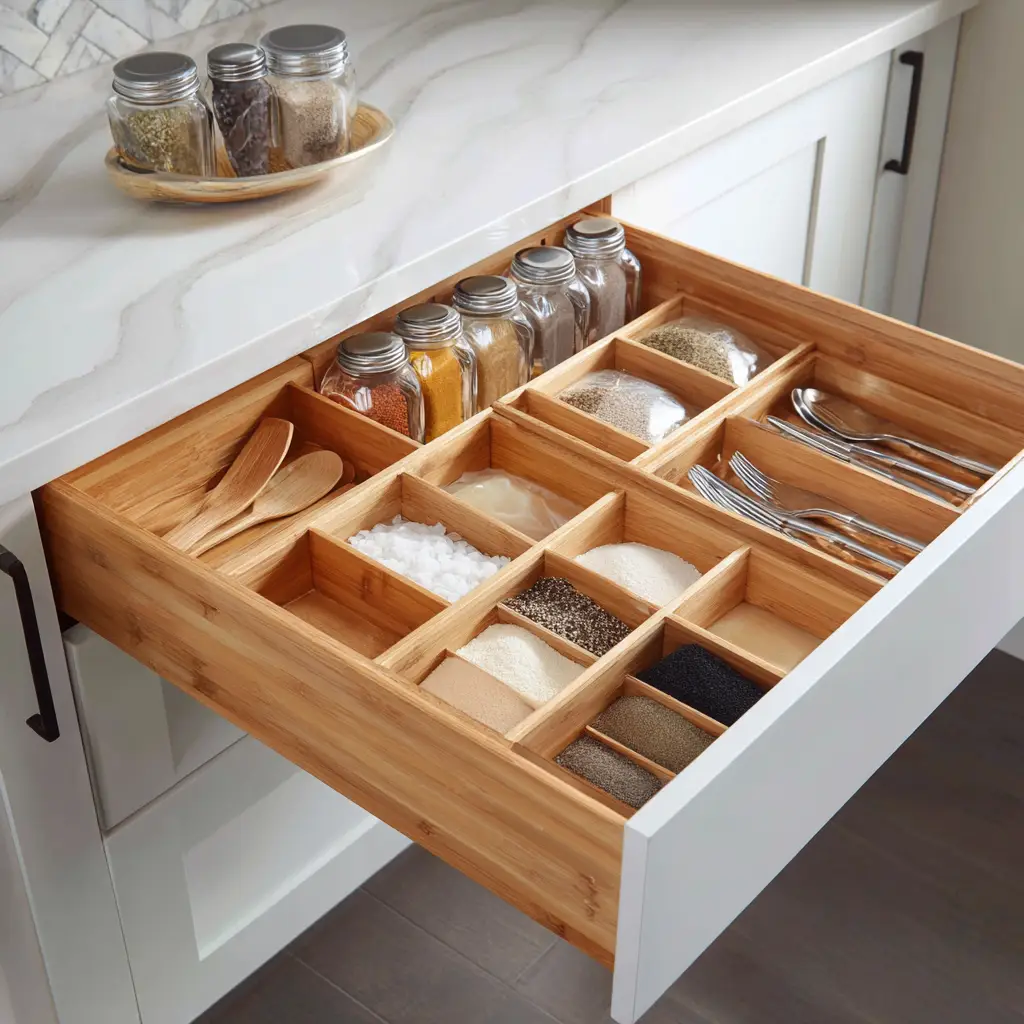
6. Hang Utensils on a Pegboard
A pegboard isn’t just for tools in the garage—it can be a functional and decorative kitchen solution. Hang spatulas, tongs, pans, and even mugs. You’ll free up drawer and cabinet space while keeping your go-to items visible and accessible. Paint it to match your decor for a personalized touch.
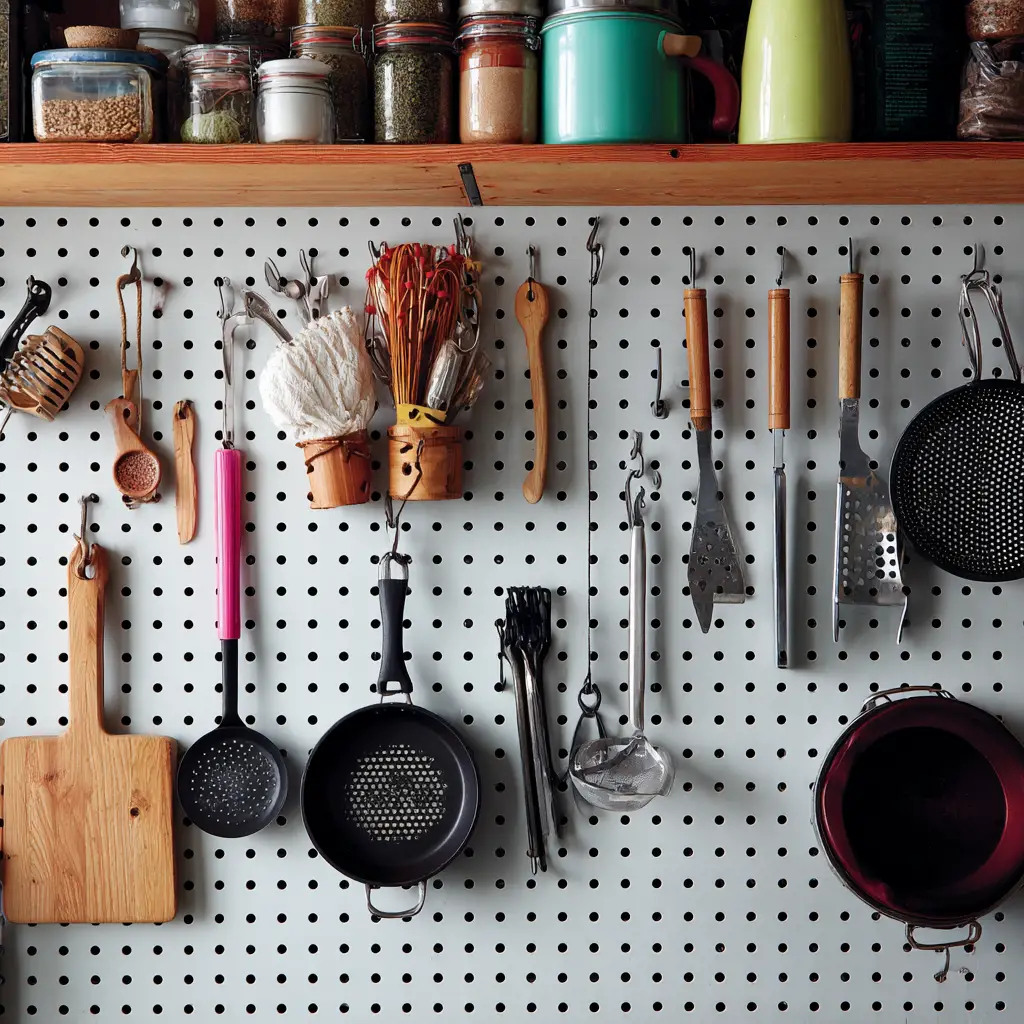
7. Store Cutting Boards Vertically
Stacked cutting boards are hard to retrieve and prone to falling. Storing them upright, like files in a cabinet, saves space and avoids clatter. Use a wire rack, a tension rod, or even a dish drying rack inside your cabinet to create this vertical system.
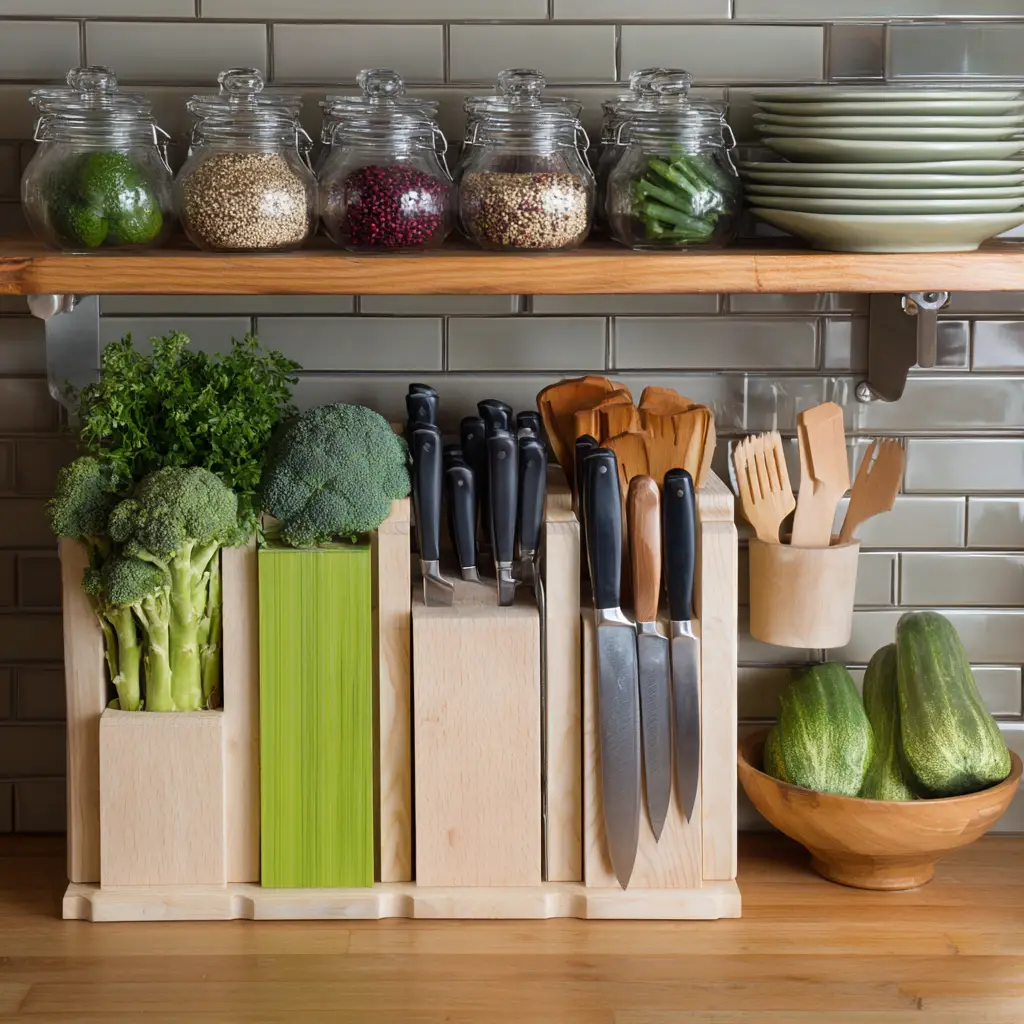
8. Add a Magnetic Strip for Knives
Instead of cluttering a drawer or countertop with a knife block, install a magnetic knife strip on the wall. It keeps your blades sharp, visible, and easily accessible. Plus, it gives your kitchen a sleek, professional look—just keep it out of reach of children.
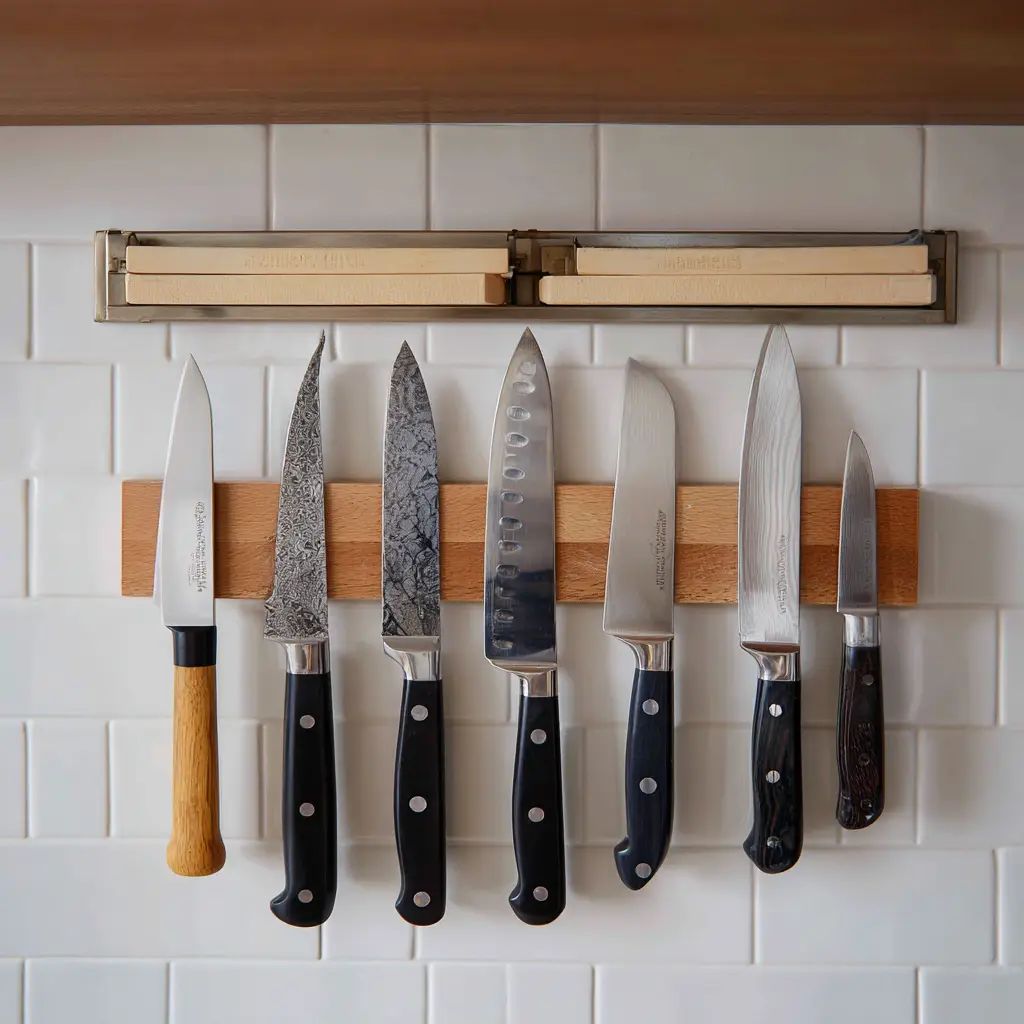
9. Use Tension Rods to Divide Cabinets
Tension rods can be a surprisingly versatile tool. Stand them up vertically to divide baking sheets, pans, or cutting boards. You can also install one under the sink to hang spray bottles and free up space below for bins or cleaners.
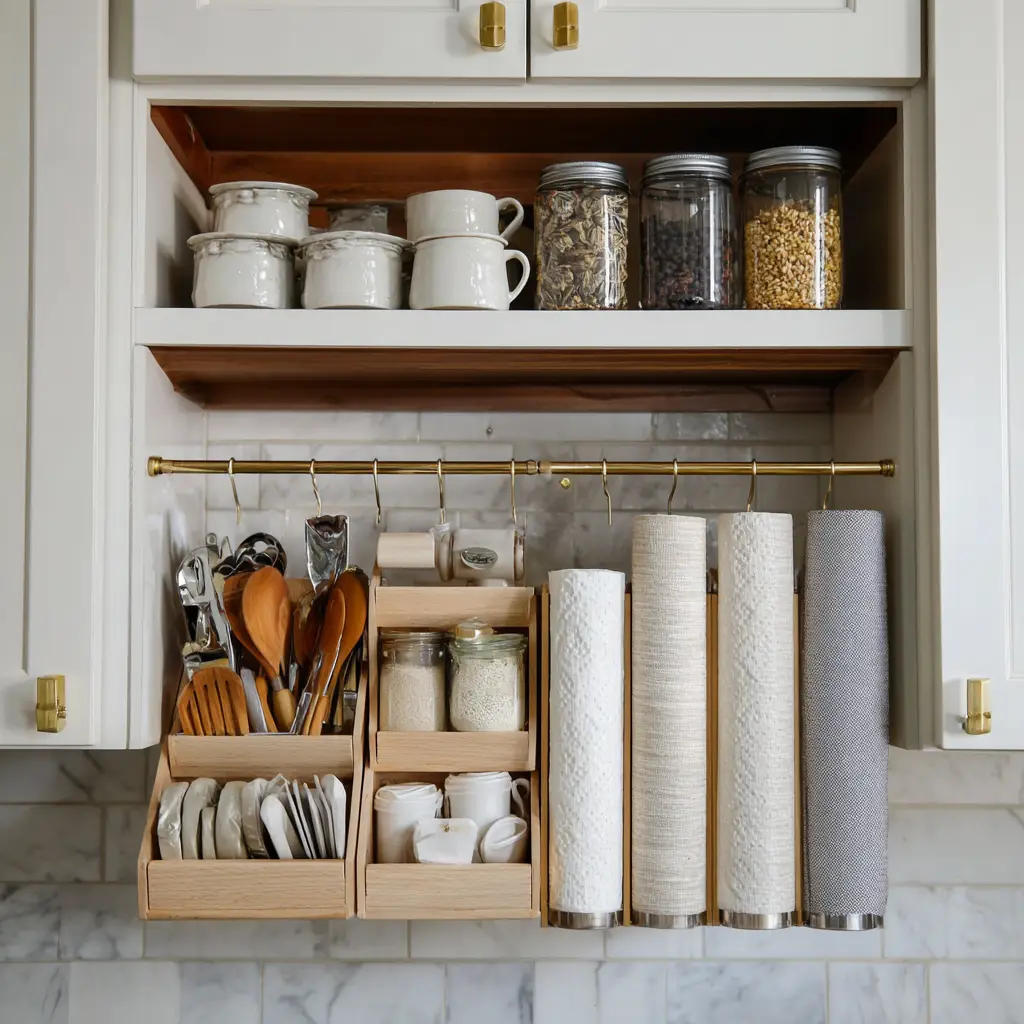
10. Use Stackable Bins in the Fridge
The fridge often becomes a chaos zone, especially in busy households. Stackable, clear bins help categorize food: veggies in one, dairy in another, snacks in their own spot. Add labels so everyone knows what goes where. You’ll spend less time hunting and more time enjoying meals.
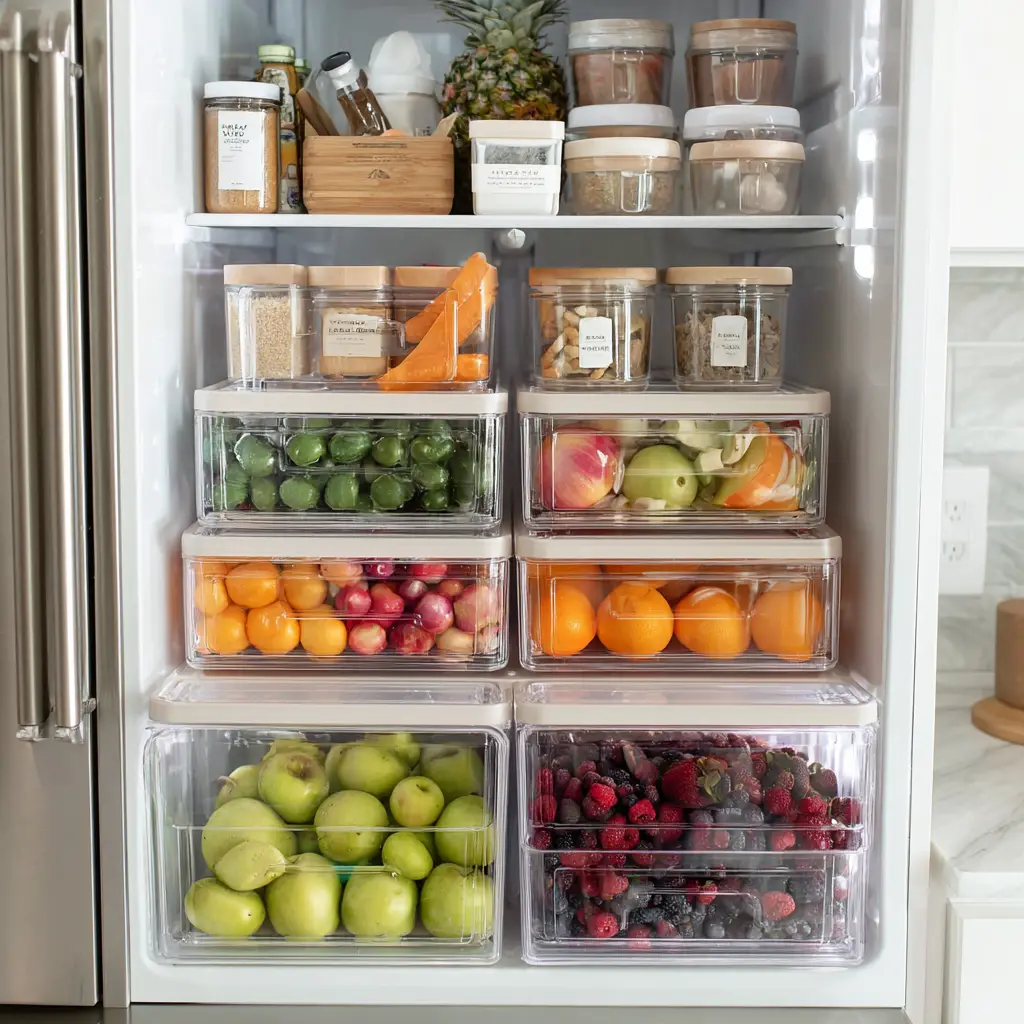
11. Label Everything
Labeling adds clarity, especially in shared kitchens. Whether it’s spices, dry goods, or storage bins, labeling helps everyone—from kids to guests—put things back in the right place. Use a label maker or simple chalkboard labels for a clean look and easy updates.
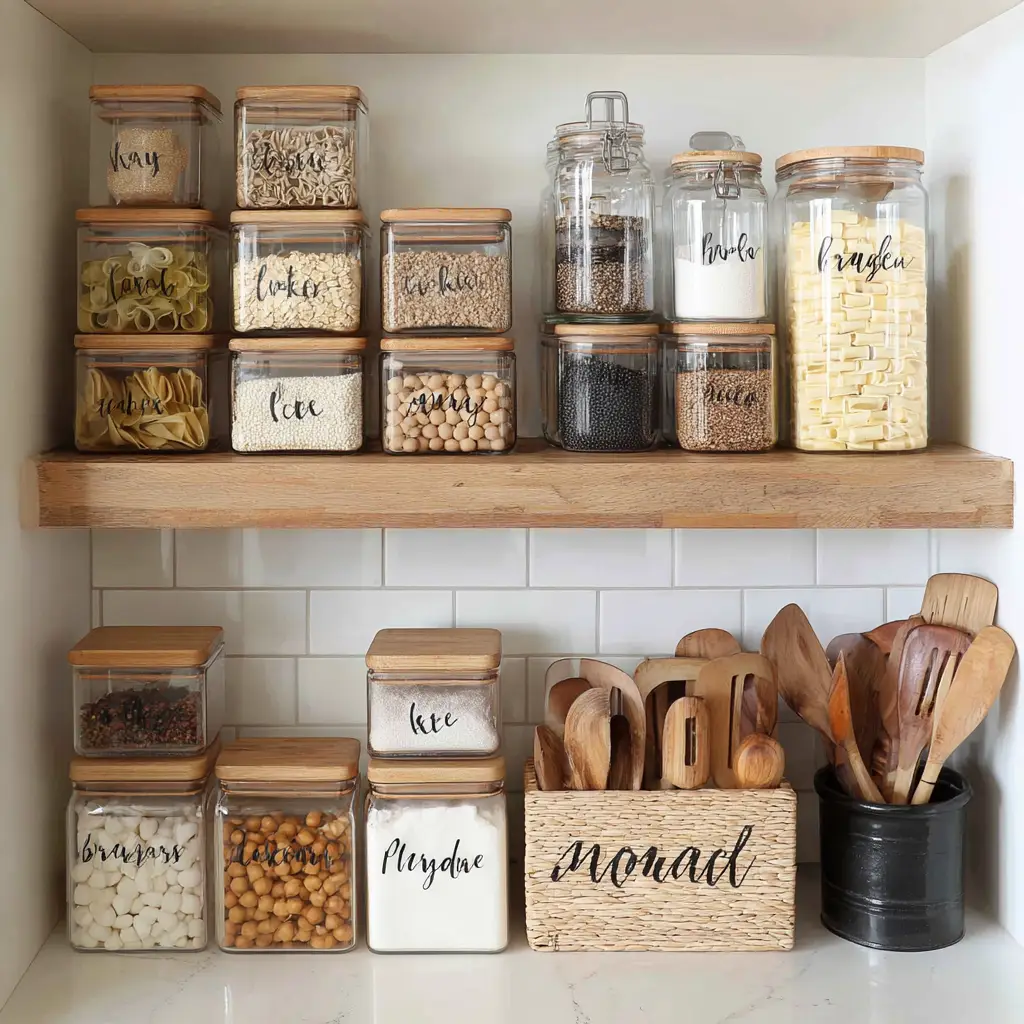
12. Use a Door-Mounted Rack for Spices
Cabinet and pantry doors are underutilized spaces. A mounted spice rack turns them into efficient storage. Keep your most-used spices within arm’s reach and arrange them alphabetically or by frequency of use for even quicker access.
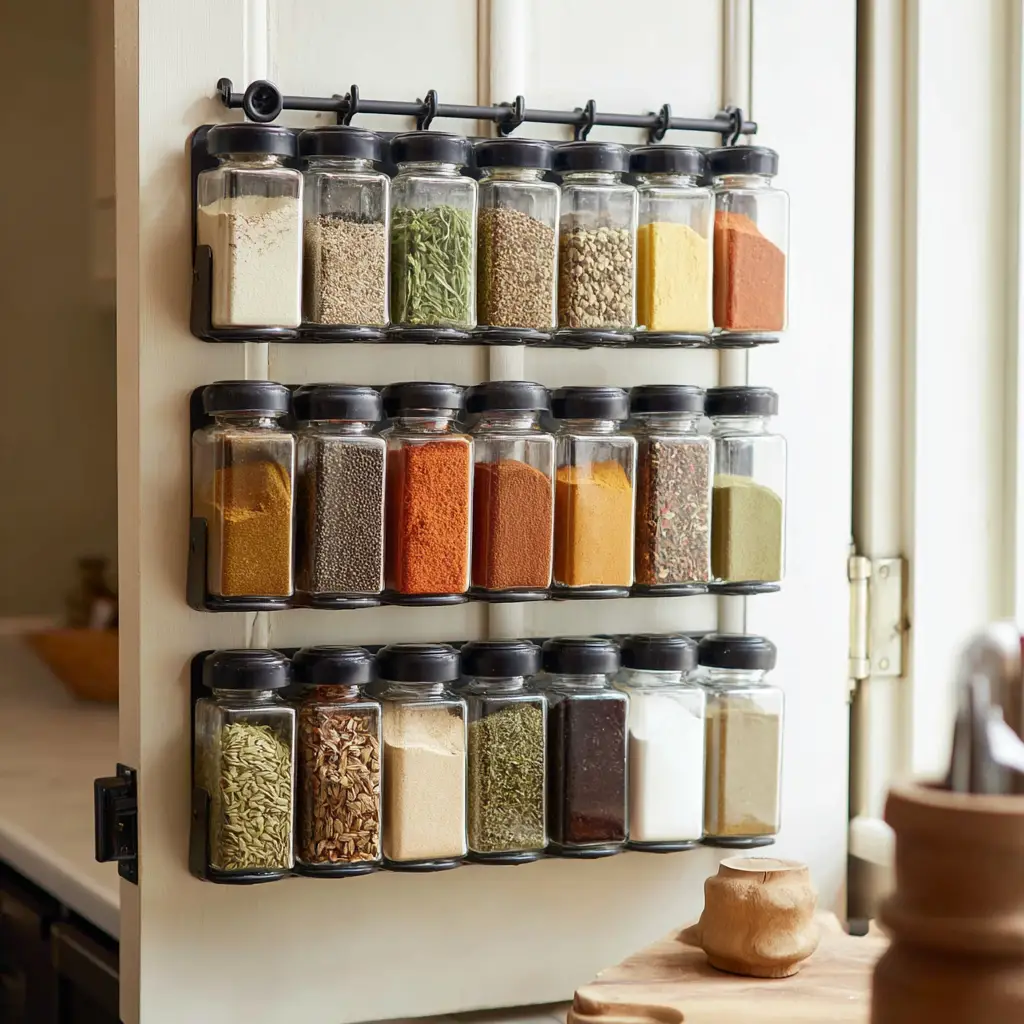
13. Keep a Donation Box
We accumulate a surprising number of extra spatulas, plastic cups, or never-used gadgets. Keeping a box for items to donate allows you to declutter gradually. Once it’s full, take it to a donation center. It’s a gentle, ongoing approach to simplifying your kitchen.
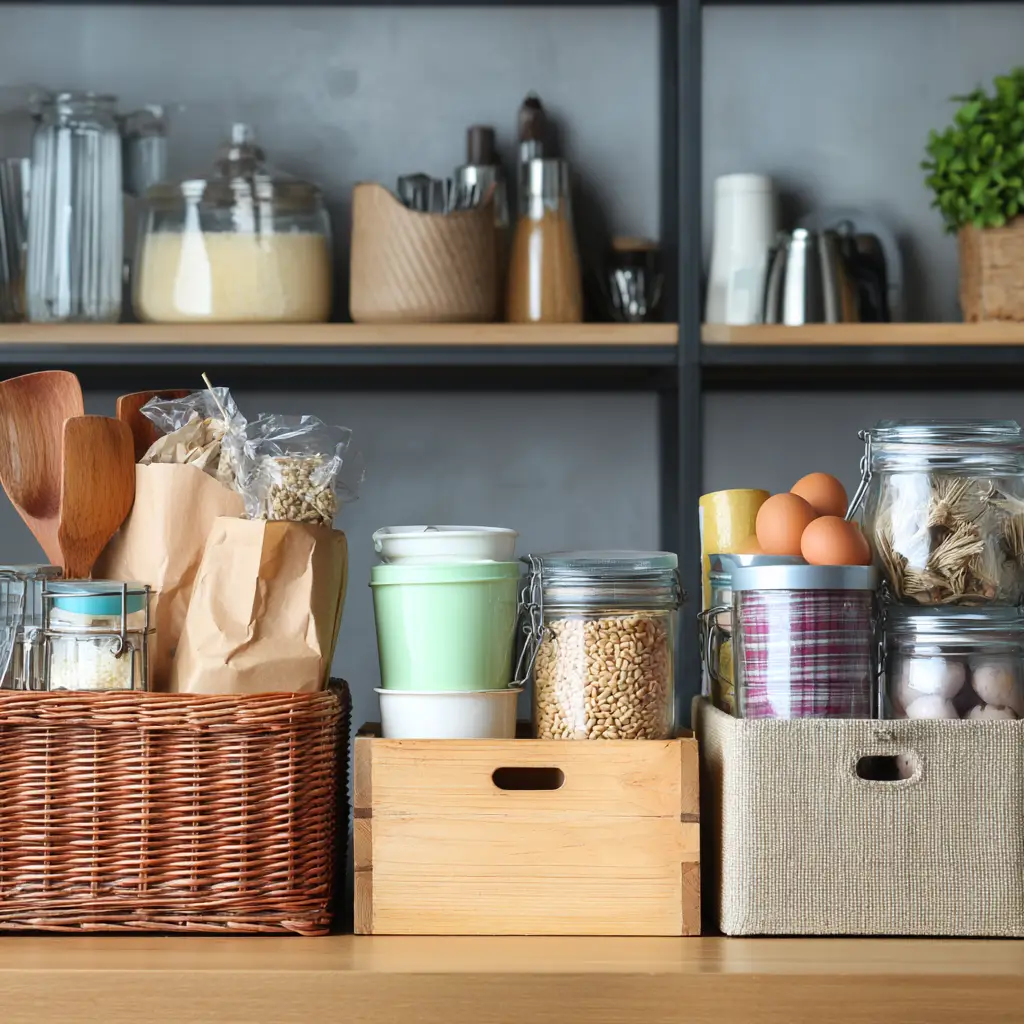
14. Store Lids Separately
Lids are the most unruly kitchen item. Instead of letting them clutter your pot or Tupperware cabinets, use a lid organizer or even a repurposed dish rack to store them upright. It keeps your space tidy and makes matching lids to containers a breeze.
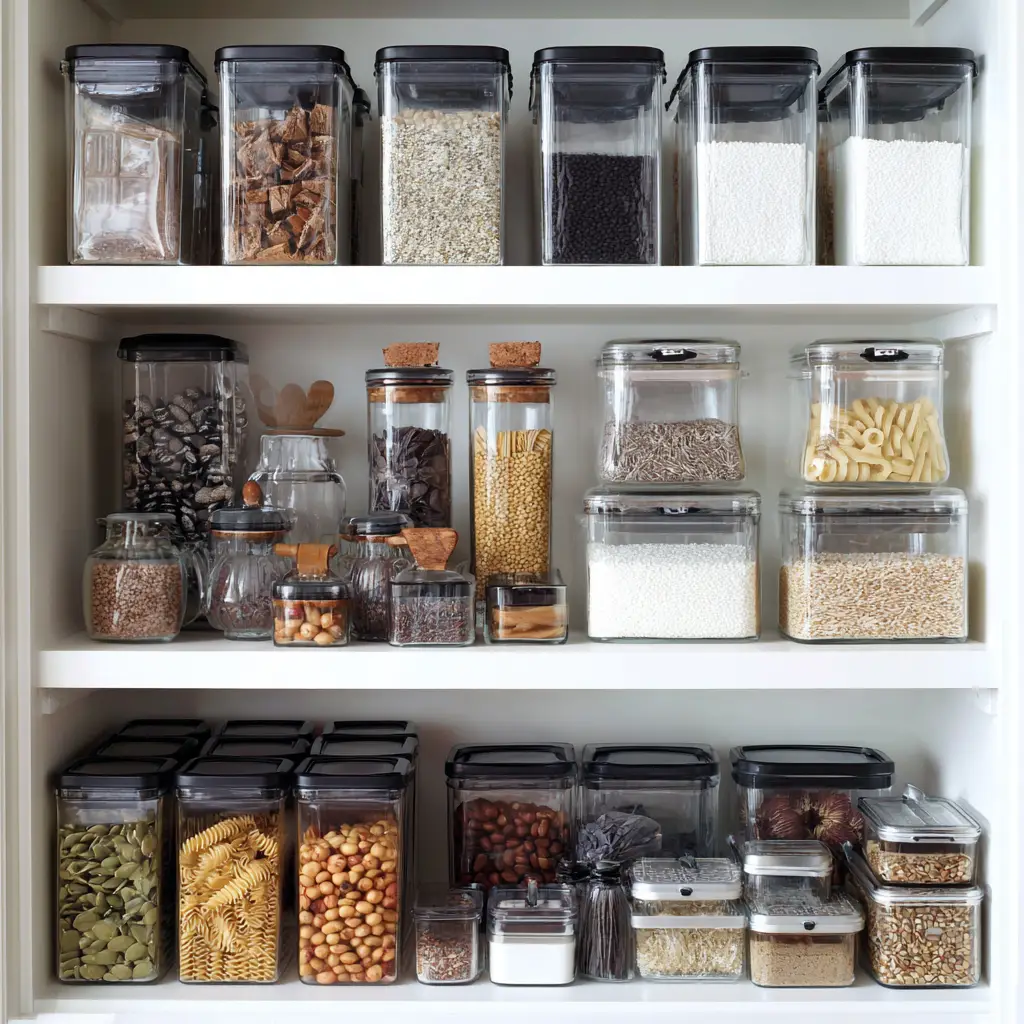
15. Rotate Pantry Stock
Many of us forget what’s at the back of the pantry, leading to expired food. Adopt the grocery store rule: first in, first out. Place newly bought items behind the older ones so you use what you already have before it goes bad.
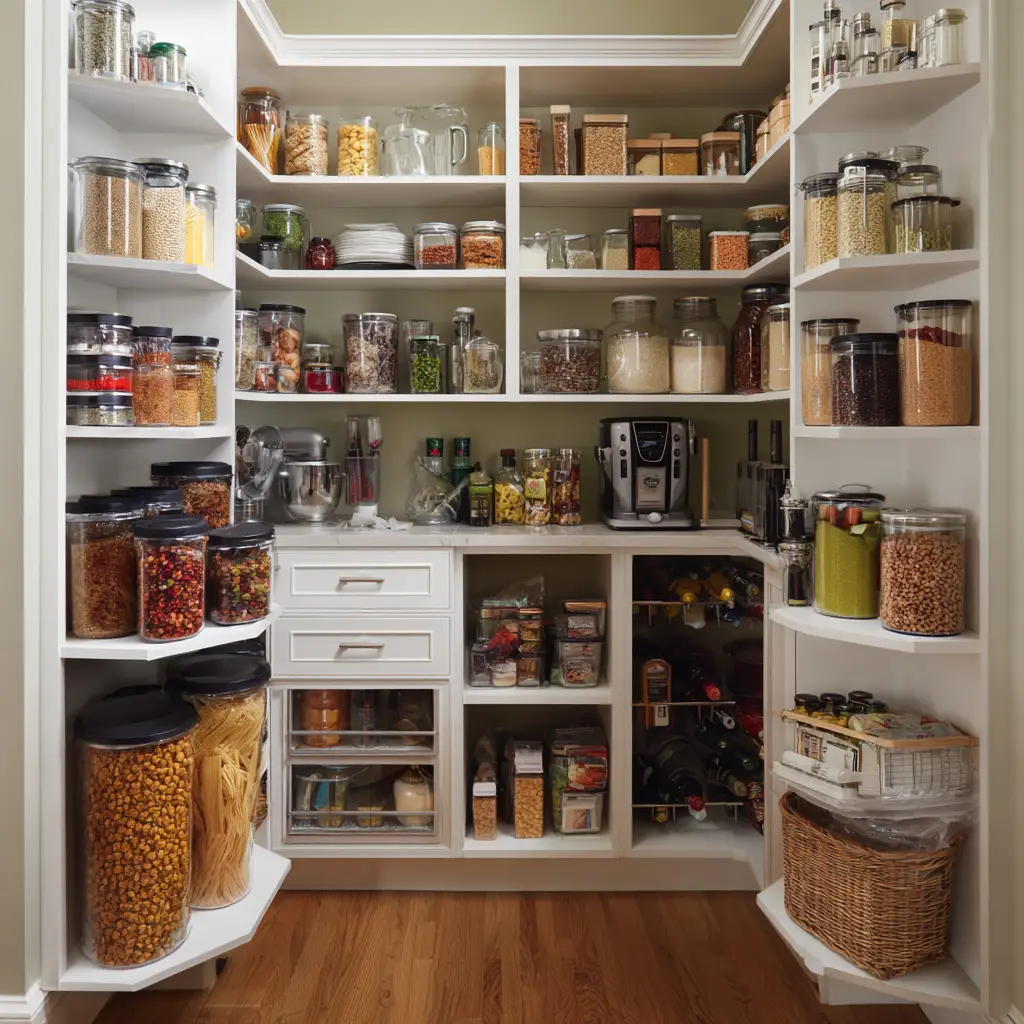
16. Use Wall Space Creatively
Look beyond shelves. Hooks, small racks, and magnetic boards can be mounted on kitchen walls to store aprons, utensils, or pot holders. Even hanging baskets can hold fruits, freeing up counter space while adding charm and function.
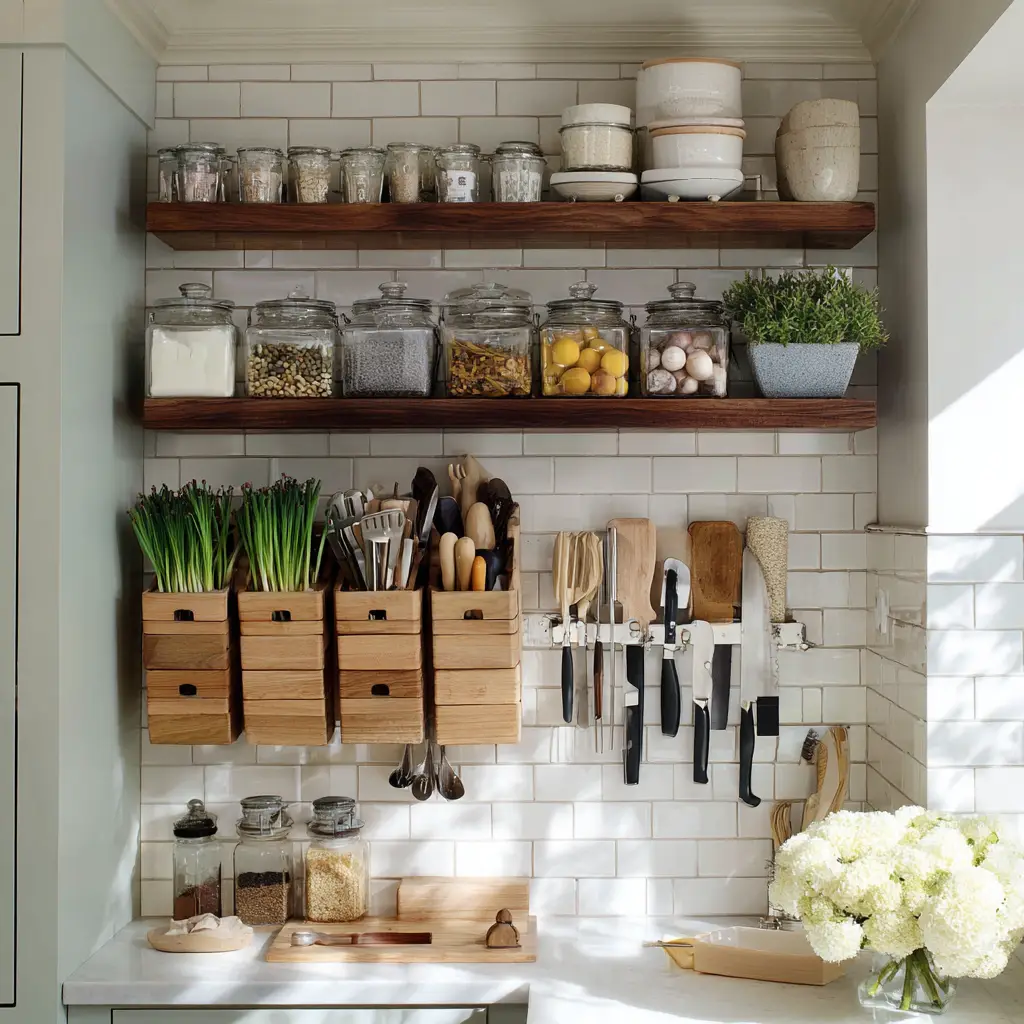
17. Designate a Coffee or Tea Station
Having a small, dedicated area for your morning routine is a game-changer. Keep your coffee maker, mugs, beans, sugar, and stirrers in one area. It streamlines mornings and adds a cozy café feel to your kitchen.
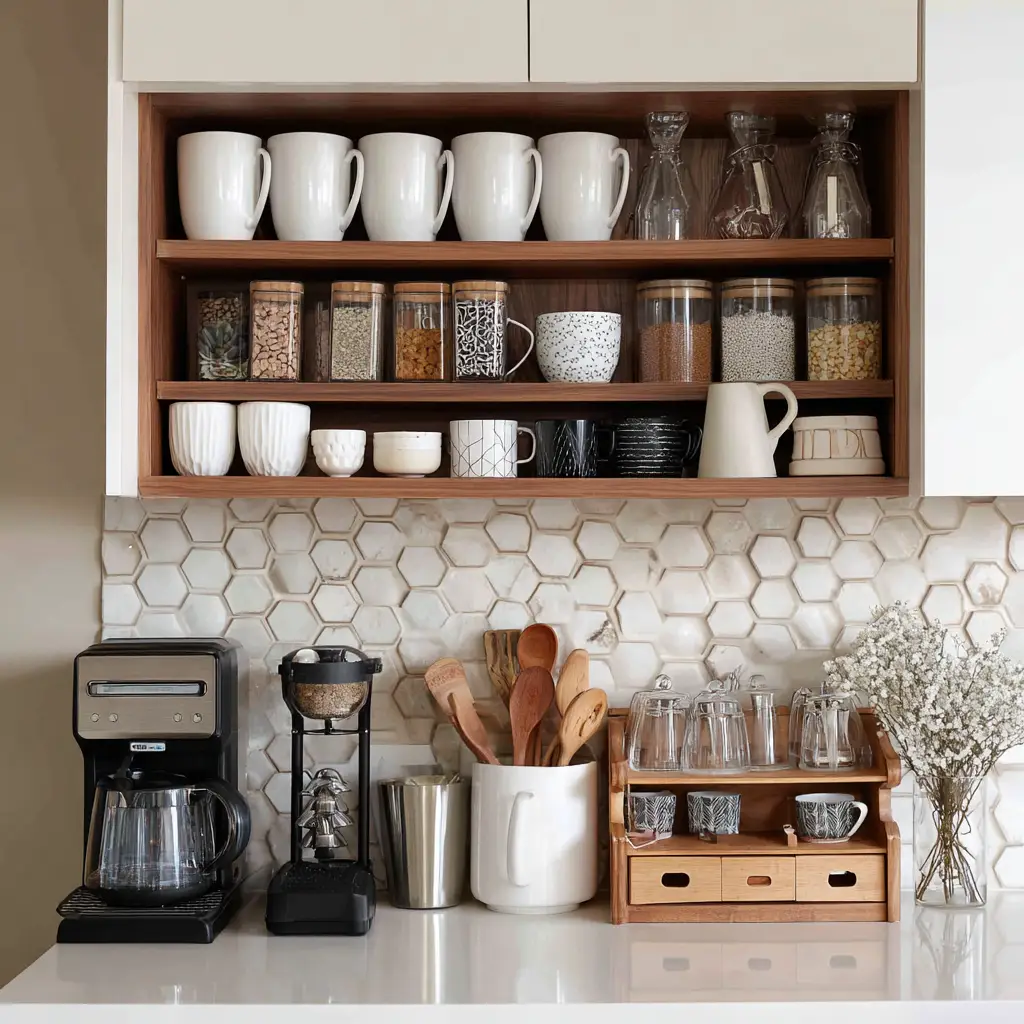
18. Store Under the Sink Smartly
This area often becomes a clutter magnet. Add stackable bins, hanging baskets, or sliding drawers to make use of the vertical space. A tension rod can hold cleaning sprays, while labeled caddies keep things sorted by task.
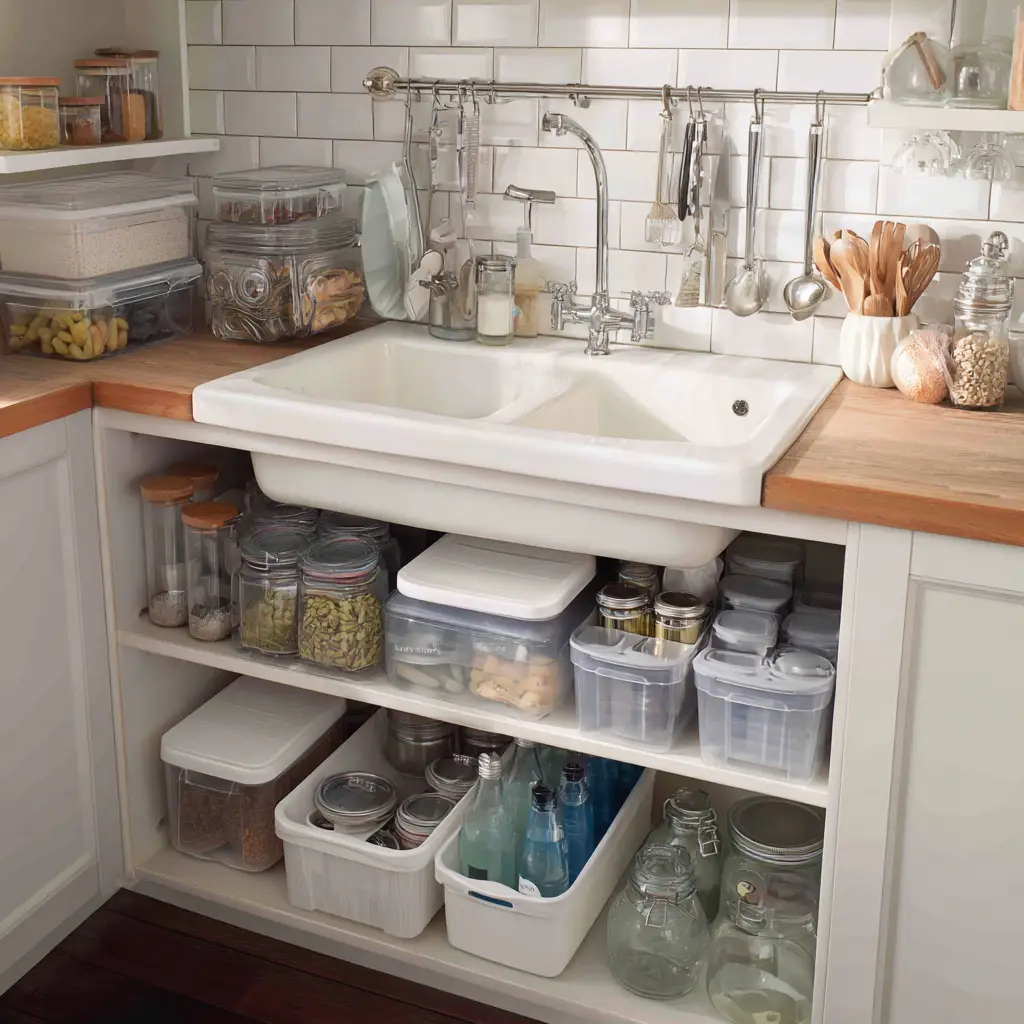
19. Hang Measuring Spoons Inside Cabinet Doors
Install small adhesive hooks or magnetic strips inside your cabinet doors to hang measuring spoons and cups. It saves drawer space and makes them easier to grab mid-recipe.
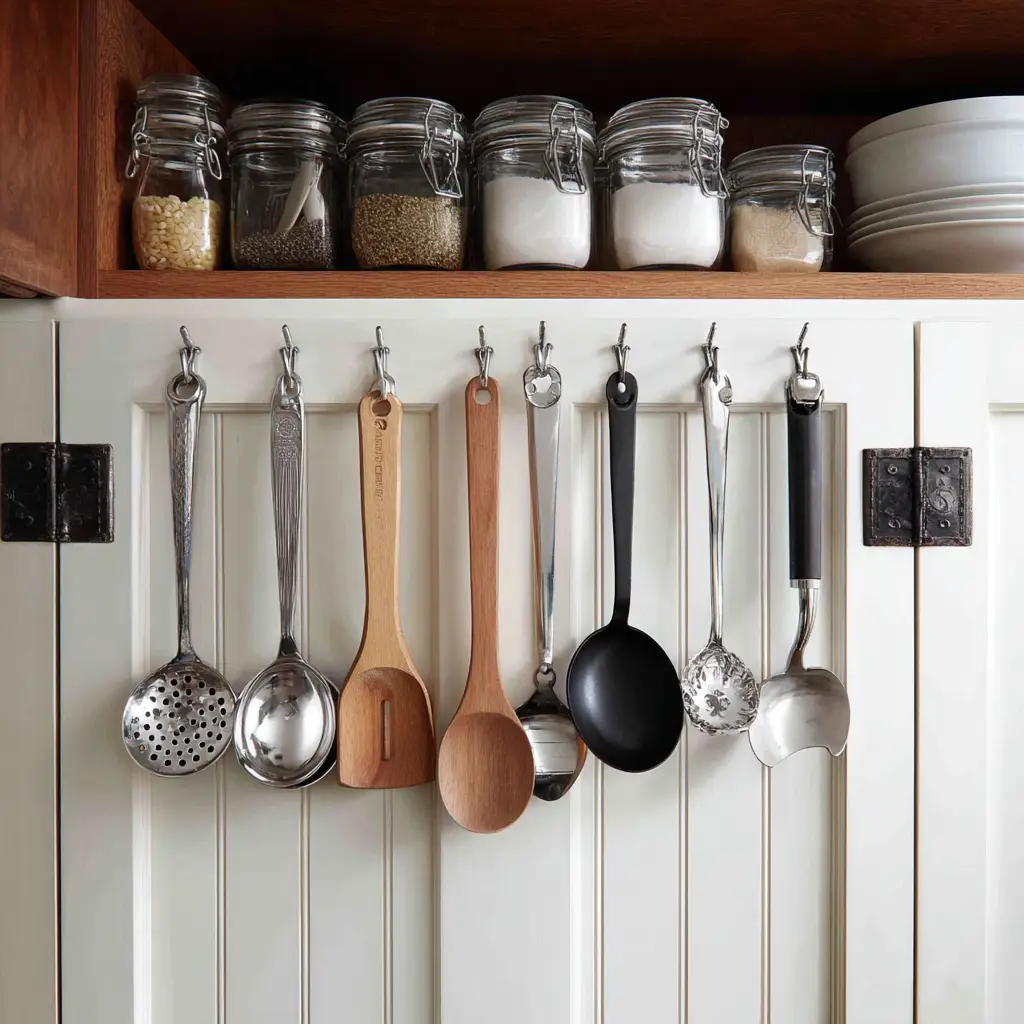
20. Use Lazy Susans in the Fridge
Yep, even the fridge can benefit. A turntable in your fridge can hold small jars, condiments, or pickles, making it easier to see what you have and reducing forgotten or spoiled items.
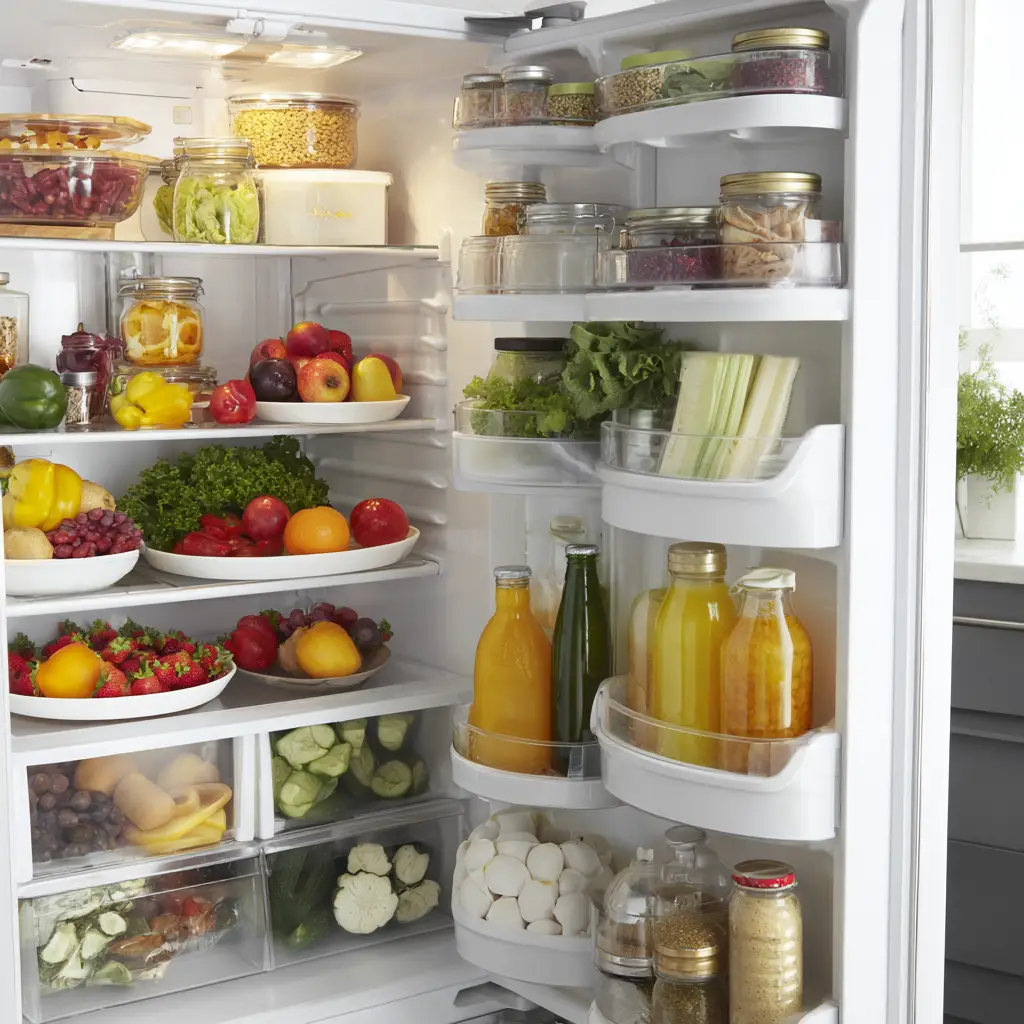
21. Add a Small Shelf Above the Stove
This shelf is perfect for storing items you use while cooking—salt, pepper, olive oil, or small utensils. Just make sure it’s not too low or flammable for safety reasons.
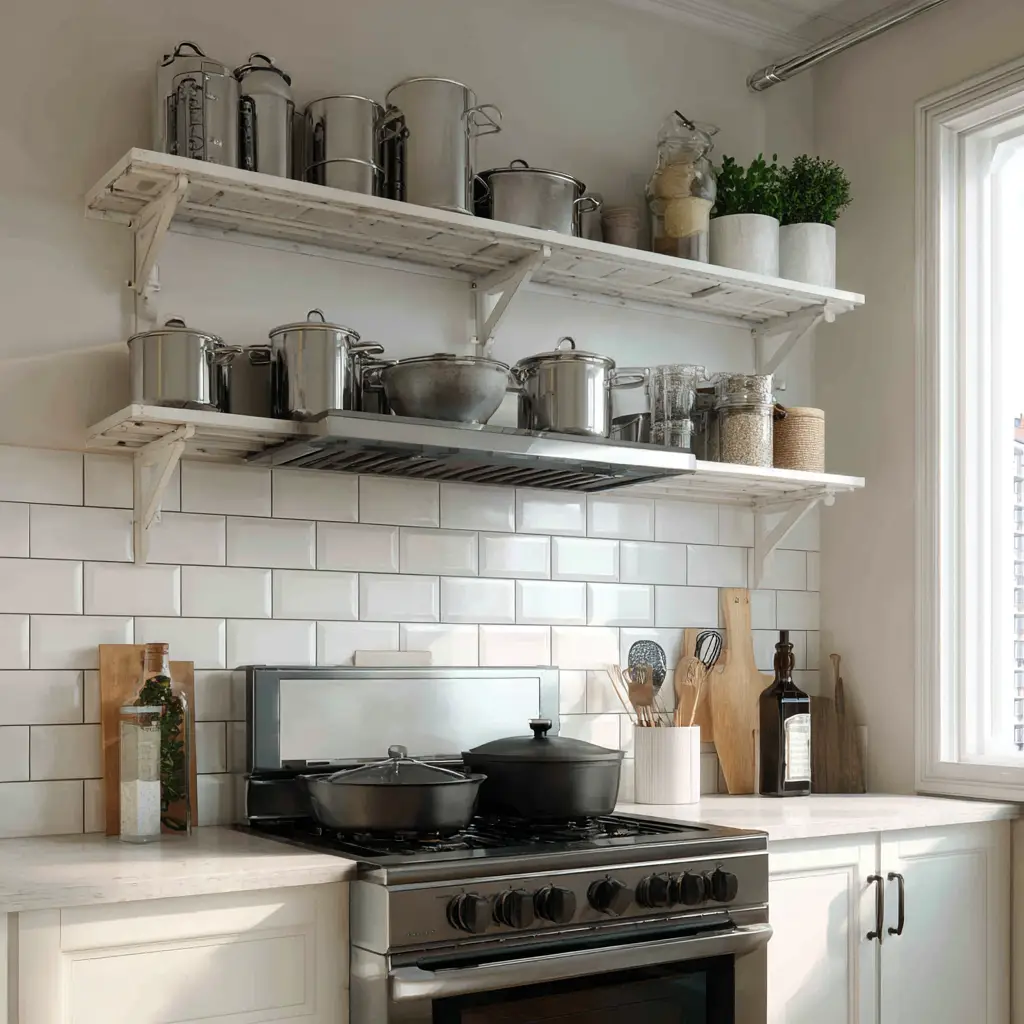
22. Store Bulk Items in Tubs or Bins
Buying in bulk saves money, but bulky bags can quickly overwhelm your pantry. Use large, labeled plastic tubs or glass jars to store flour, rice, and other staples. They keep items fresh and easier to access.
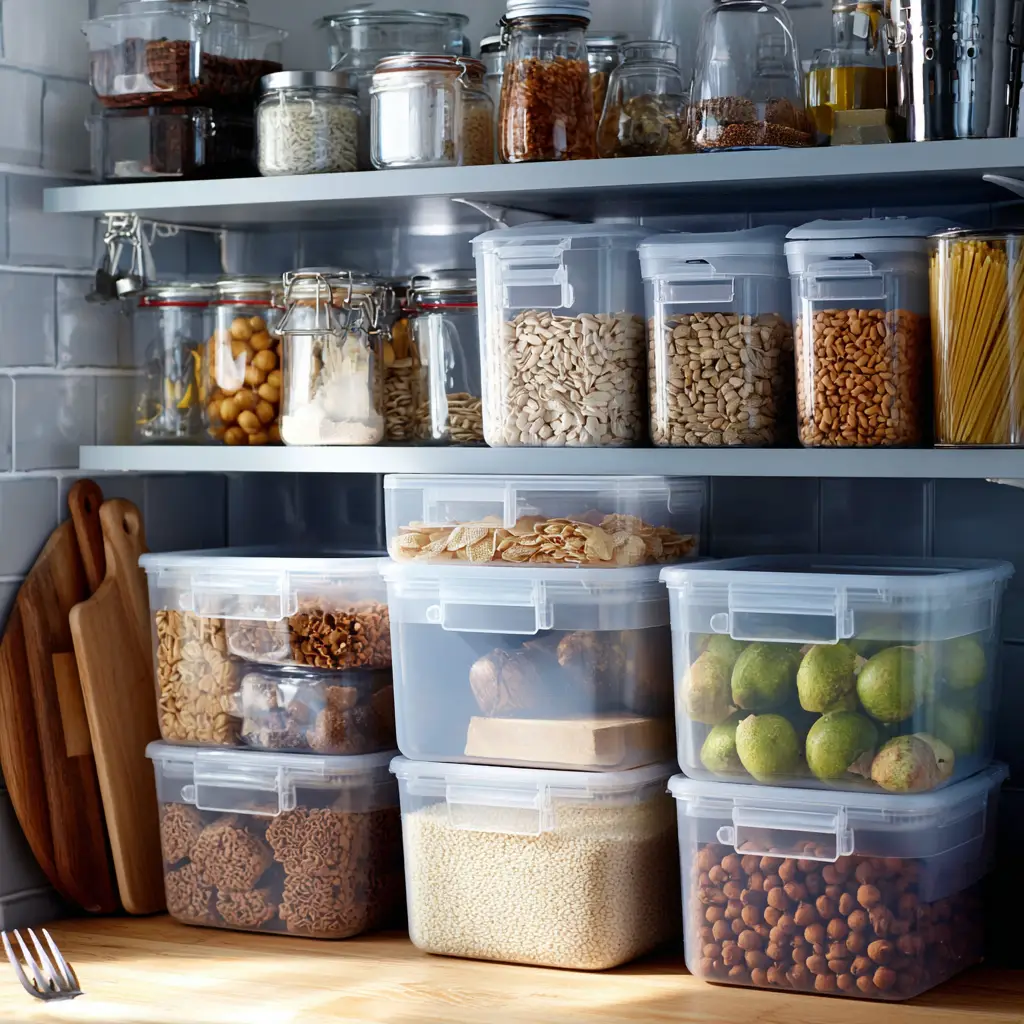
23. Install an Over-the-Sink Shelf
Use this space for dish soap, sponges, or a cute plant. Over-the-sink shelves can add storage without taking up extra counter space, especially in small kitchens.
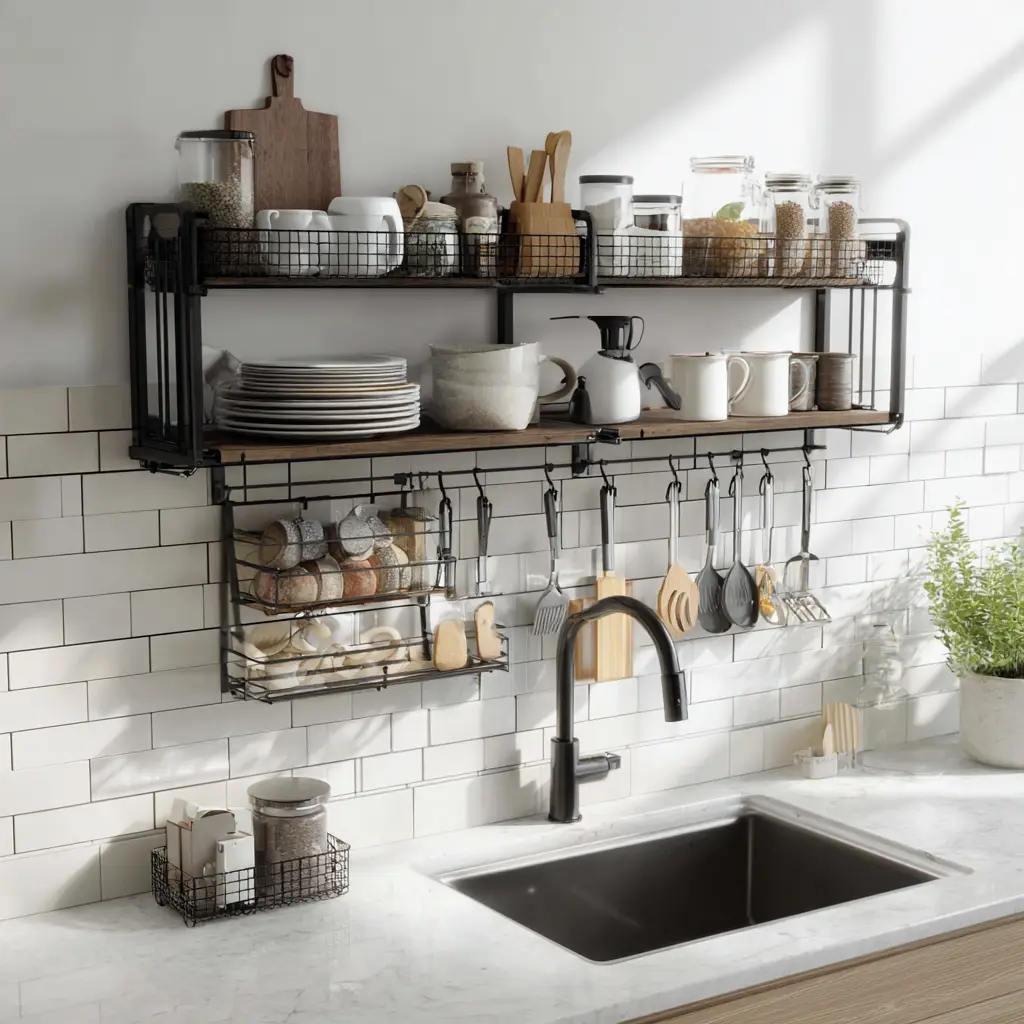
24. Use Vertical Organizers in the Freezer
The freezer tends to be a black hole. Vertical organizers can help you stand up bags of frozen veggies or meats, making everything visible and easier to access. You’ll waste less food and save time.
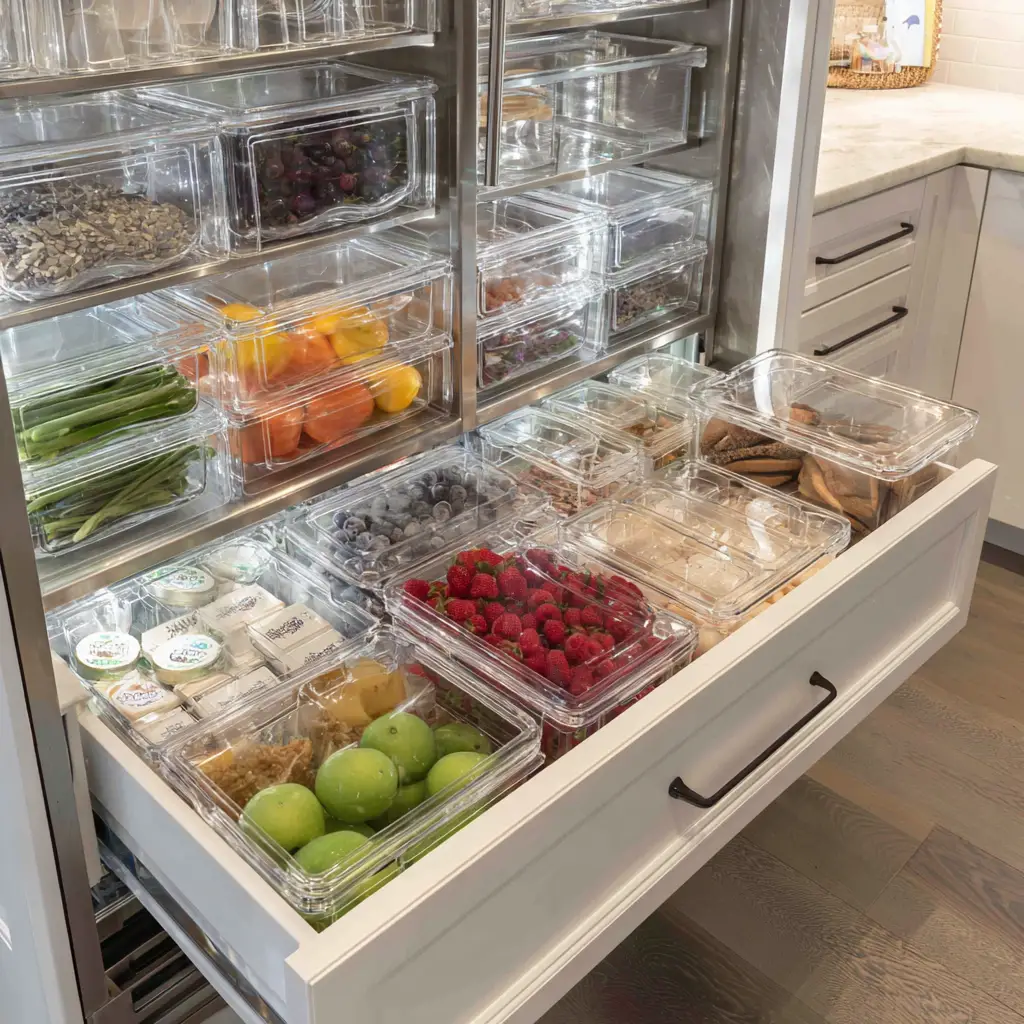
25. Corral Cleaning Supplies in a Caddy
A simple plastic or metal caddy can hold your kitchen cleaning supplies. It’s portable, which means you can grab everything in one go when it’s time to clean, instead of digging under the sink.
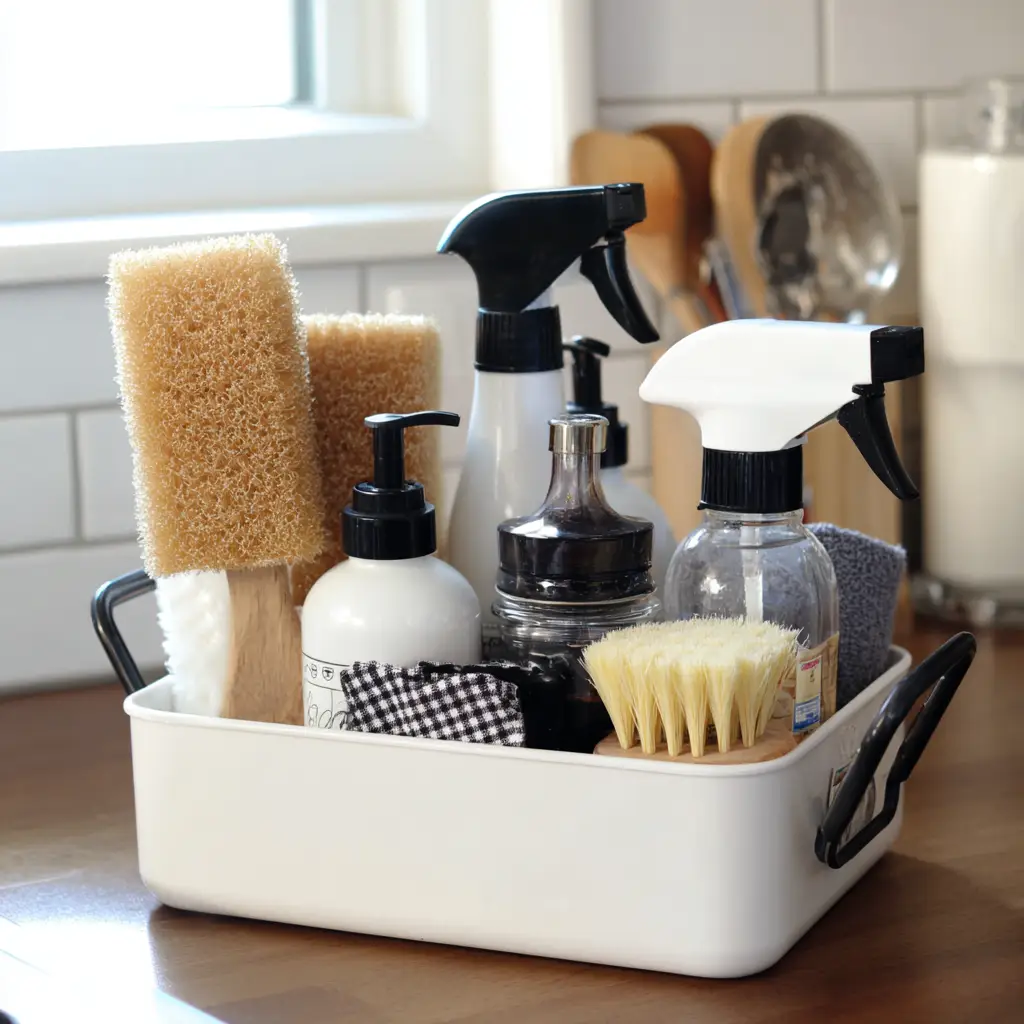
26. Opt for Dual-Purpose Furniture
Small kitchens benefit from furniture that does double duty. Think storage benches, rolling carts with drawers, or kitchen islands with shelves. These can store everything from linens to appliances.
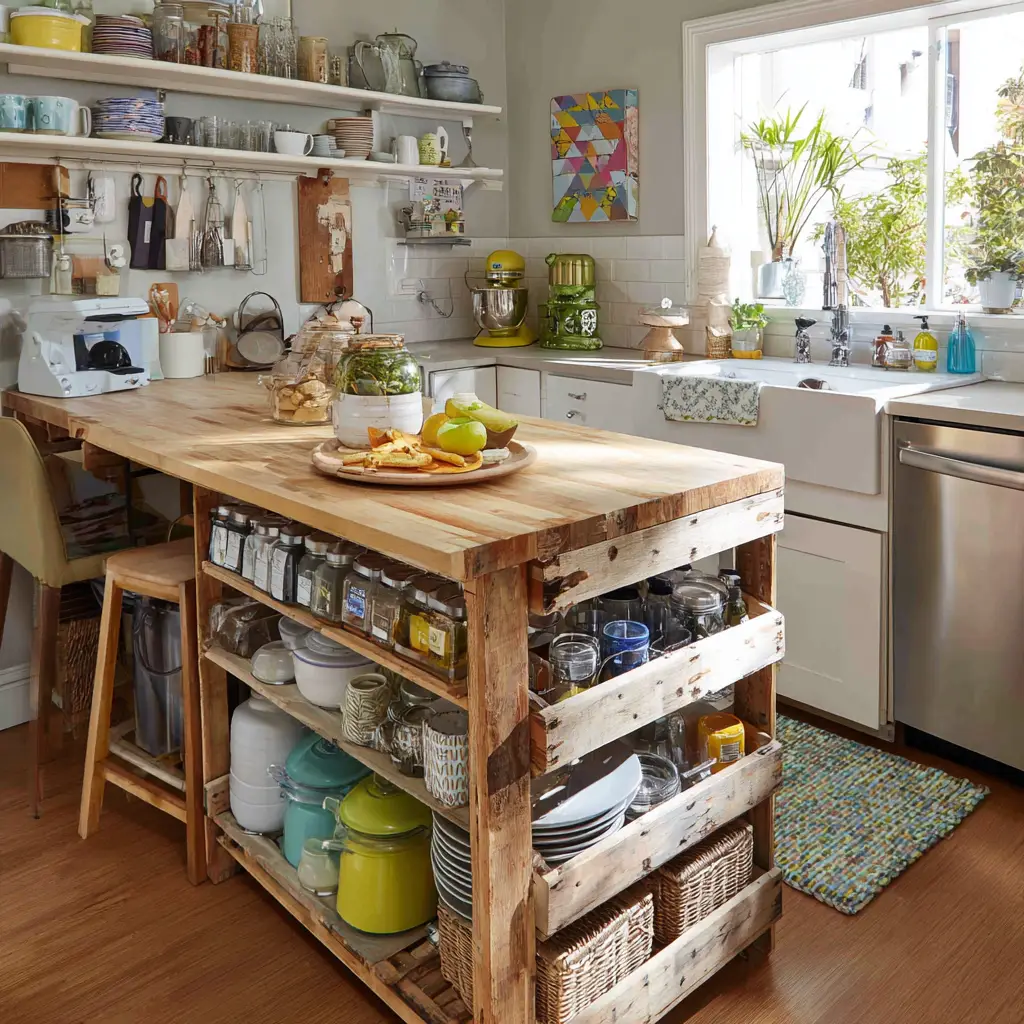
27. Create a Paper Station
Bills, recipes, menus—they all seem to end up on the counter. A small wall file organizer or even a drawer just for paper clutter keeps your counters tidy. Include a pen, notepad, and maybe a few coupons.
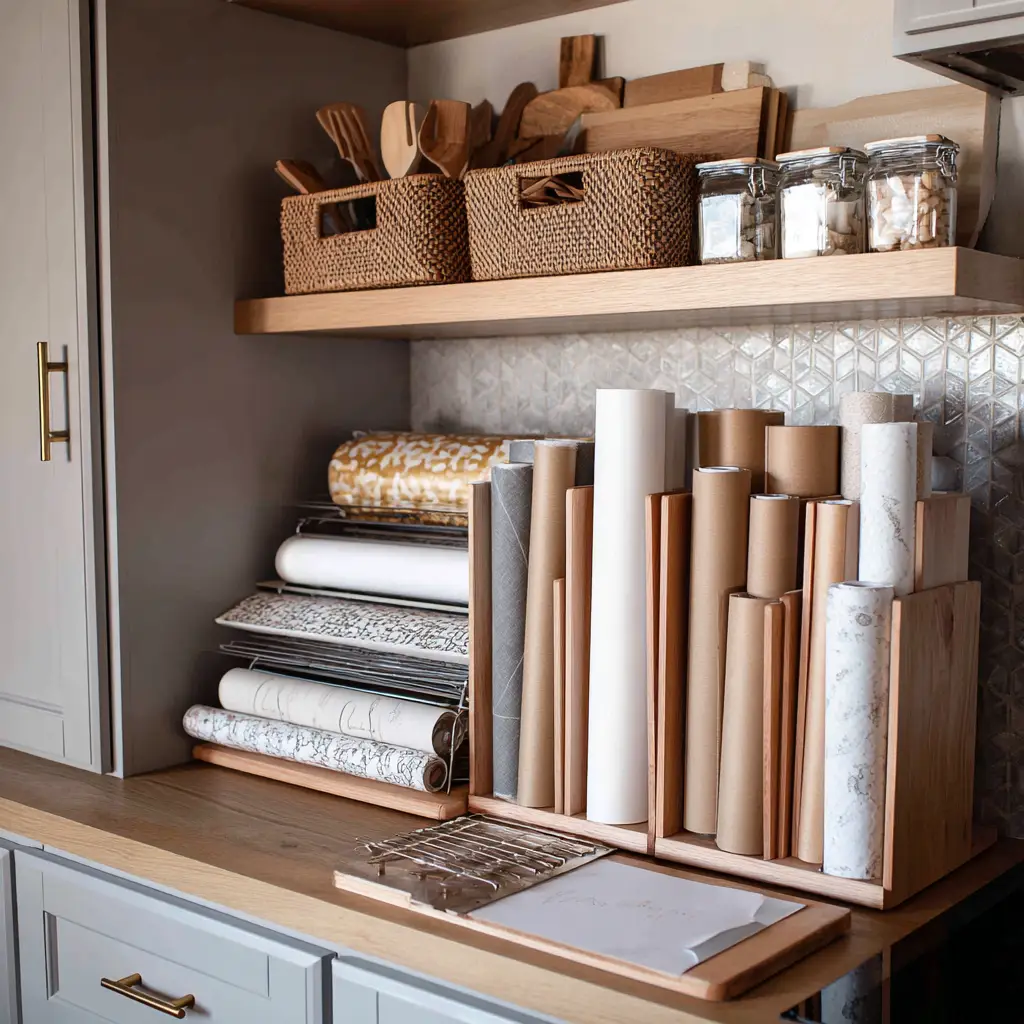
28. Use Shelf Risers
Shelf risers are inexpensive but can double your shelf space. Use them in cabinets to stack cups and plates, or in the pantry for canned goods. It reduces wasted vertical space and makes everything more accessible.
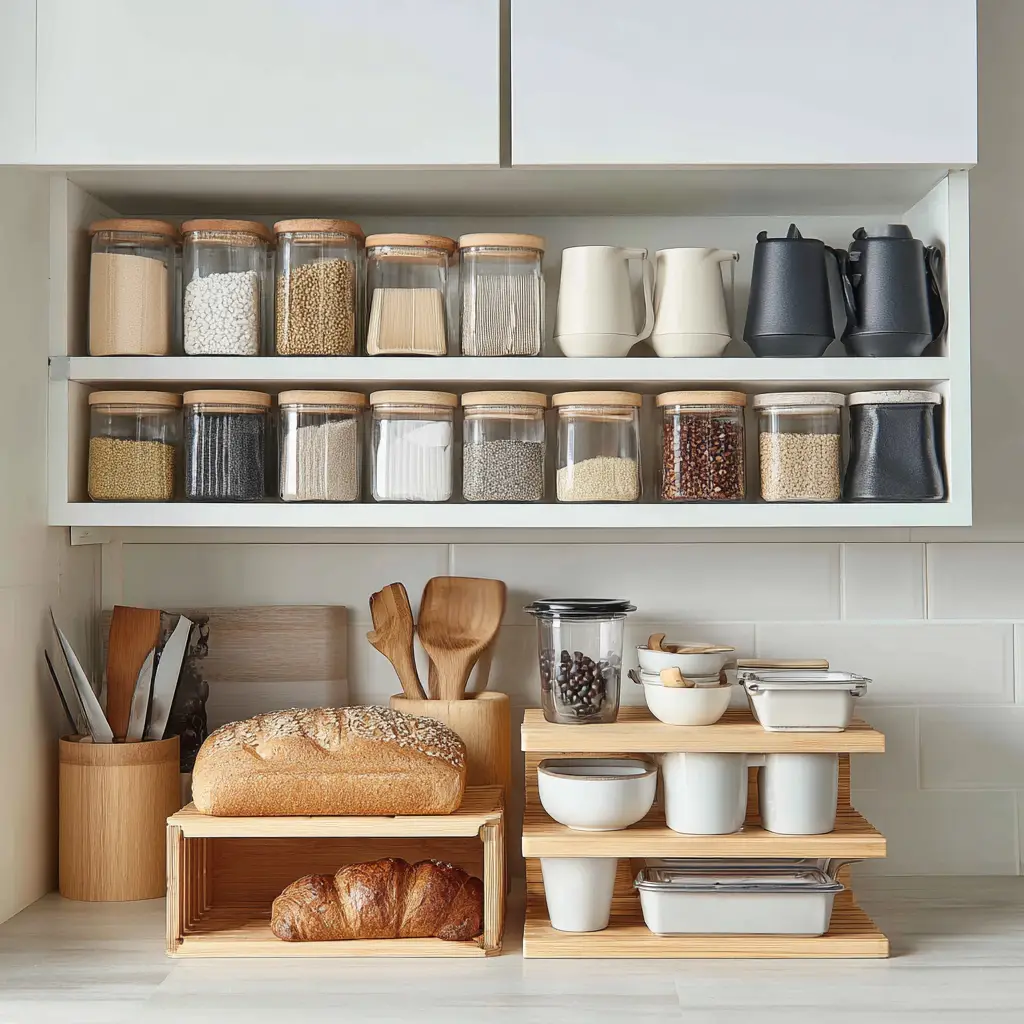
29. Keep Countertops Mostly Clear
Visual clutter can make even a clean kitchen feel chaotic. Only keep what you use daily—like a toaster, coffee maker, or fruit bowl—on your counters. Store the rest out of sight to create a more peaceful environment.
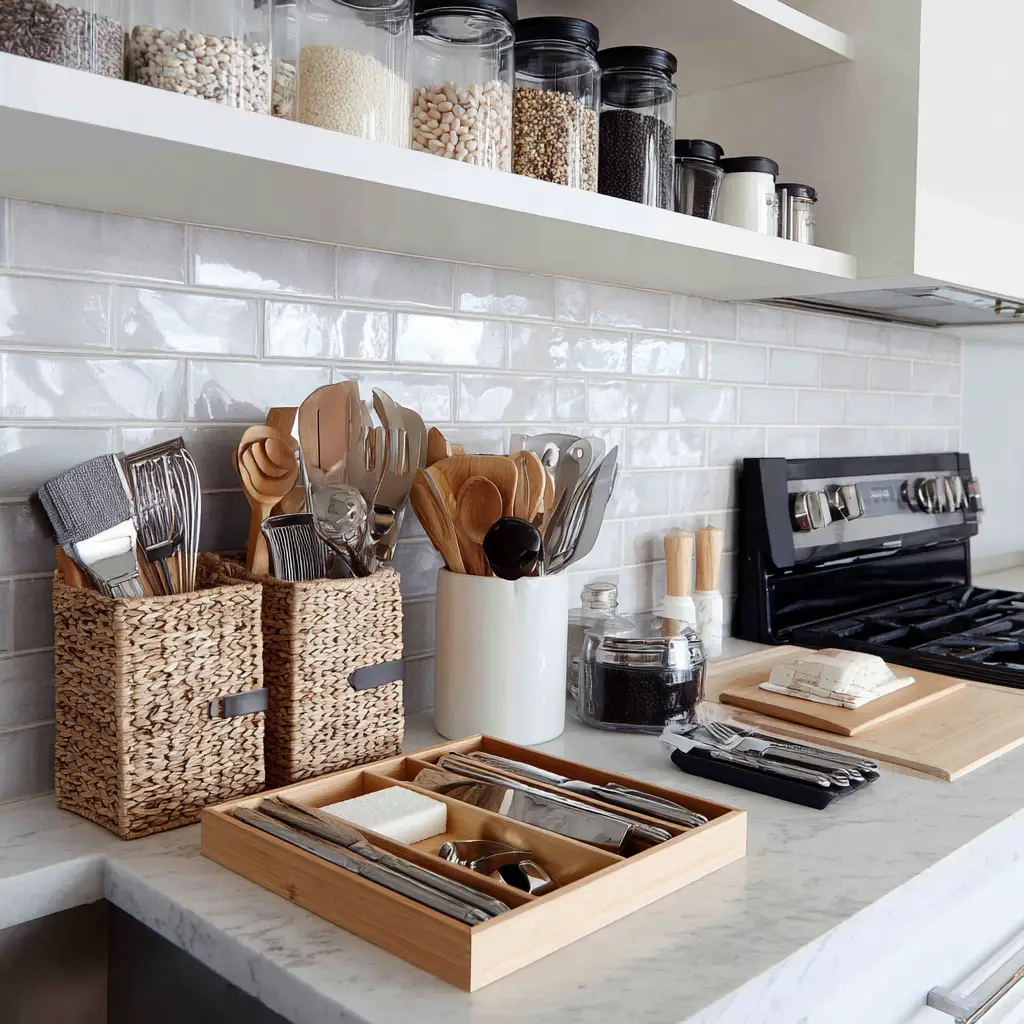
30. Reassess Every 6 Months
Your kitchen needs evolve. A new baby, diet changes, or moving homes can shift how you use your space. Schedule a twice-yearly reassessment to declutter, rearrange, and make sure everything still serves your current lifestyle.
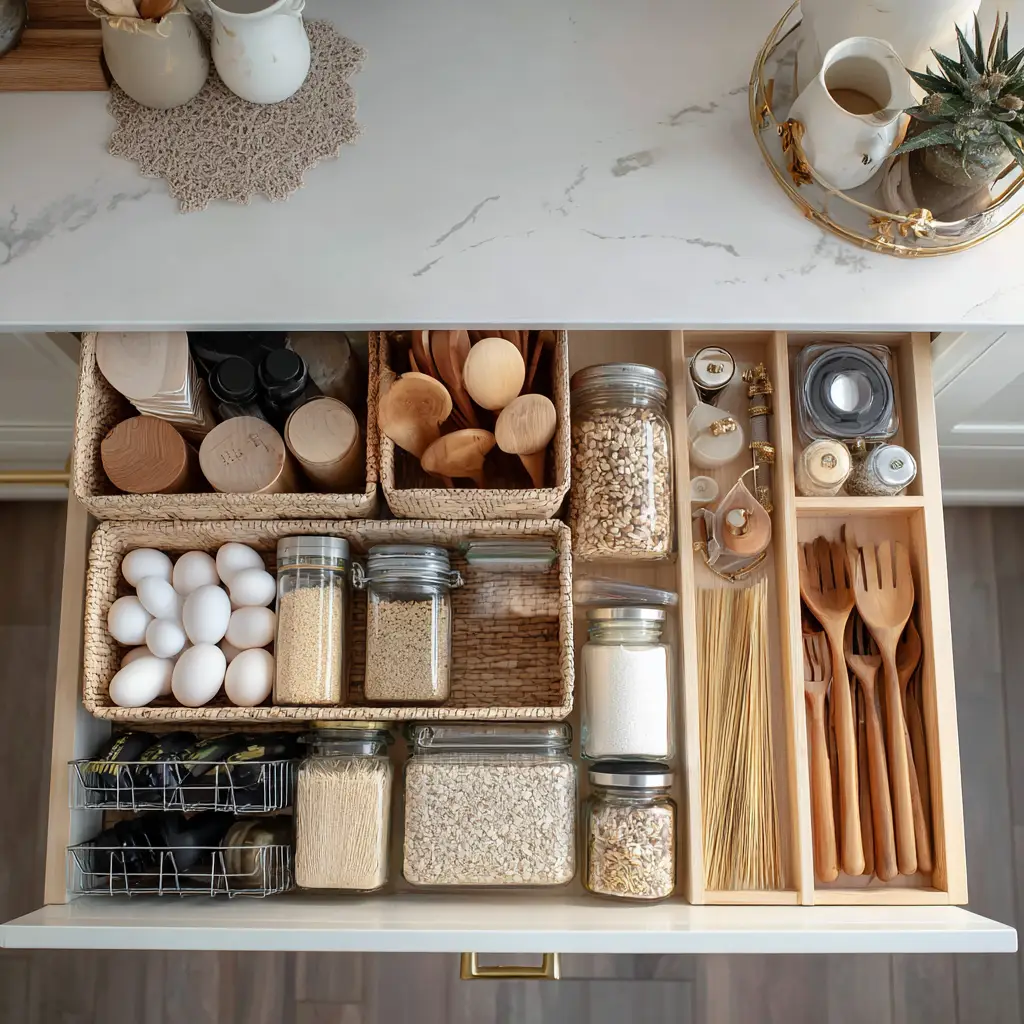
FAQs
What’s the best way to start organizing a messy kitchen?
Start small. Choose one drawer, one cabinet, or one shelf. Empty it completely, clean it, and sort the contents into keep, toss, or donate piles. Then move on to the next area. A slow, focused approach makes the task less overwhelming and more sustainable.
How can I organize a small kitchen with limited space?
Use vertical space creatively. Add wall-mounted shelves, magnetic strips, and hooks. Opt for stackable containers and collapsible tools. Declutter often and prioritize essentials over “just in case” items.
How often should I reorganize my kitchen?
Reassess your kitchen setup at least every 6 months, or whenever you notice clutter building up. Life changes, and so do your needs—don’t be afraid to adapt your systems accordingly.
Should I buy all new containers and organizers?
No need to spend a fortune. Start by reusing items you already have—like mason jars, shoeboxes, or repurposed tins. Once you see what’s truly useful, invest in quality containers gradually.
Conclusion
An organized kitchen isn’t about rules—it’s about making your space work for you. These 30 ideas are here to inspire you, not overwhelm you. Whether you implement just a few or go all-in, each small change brings more clarity, ease, and joy to your everyday cooking routine. Take it one drawer, one shelf, one habit at a time—and remember, your kitchen doesn’t have to be perfect to be perfectly functional.

